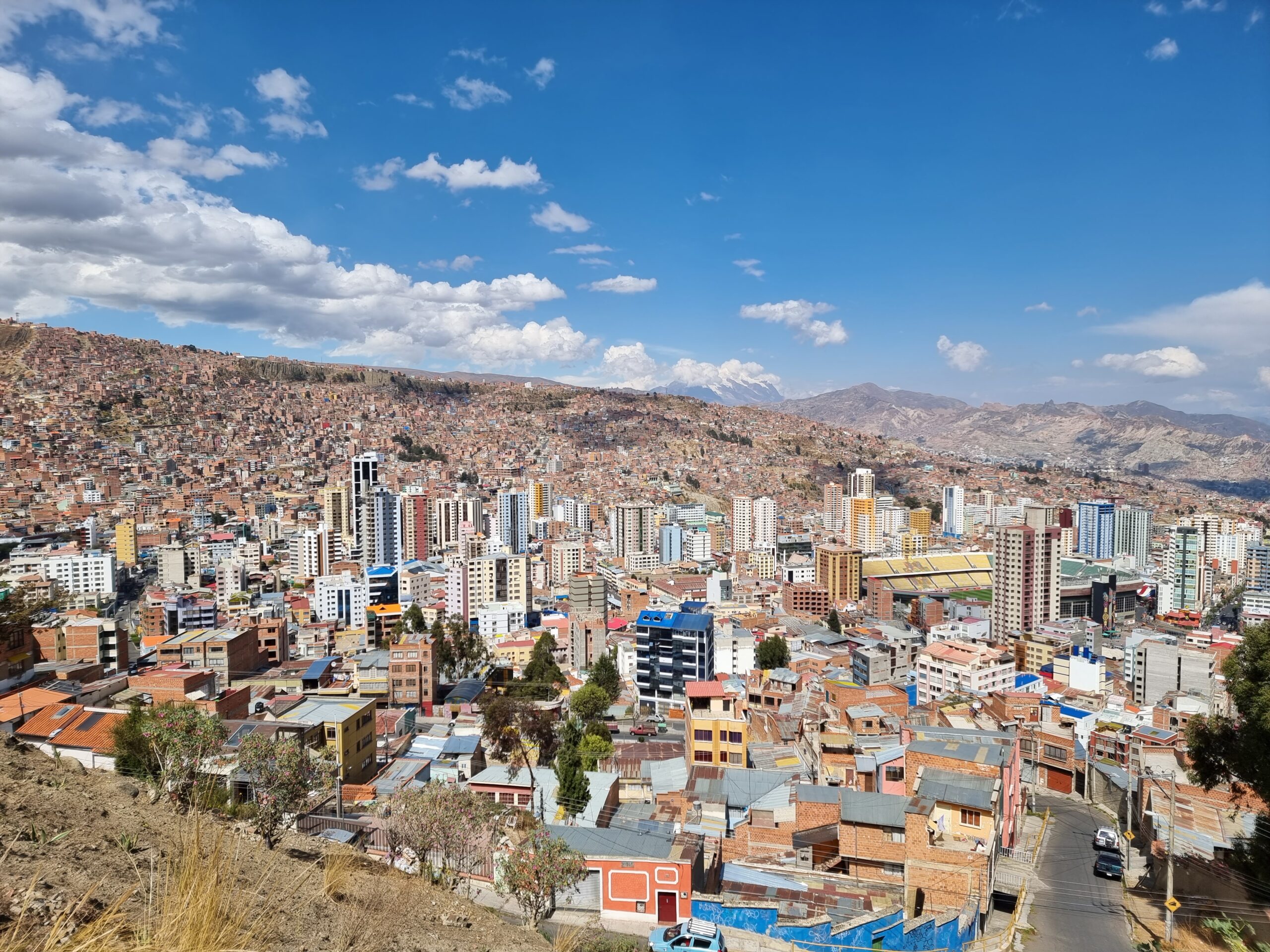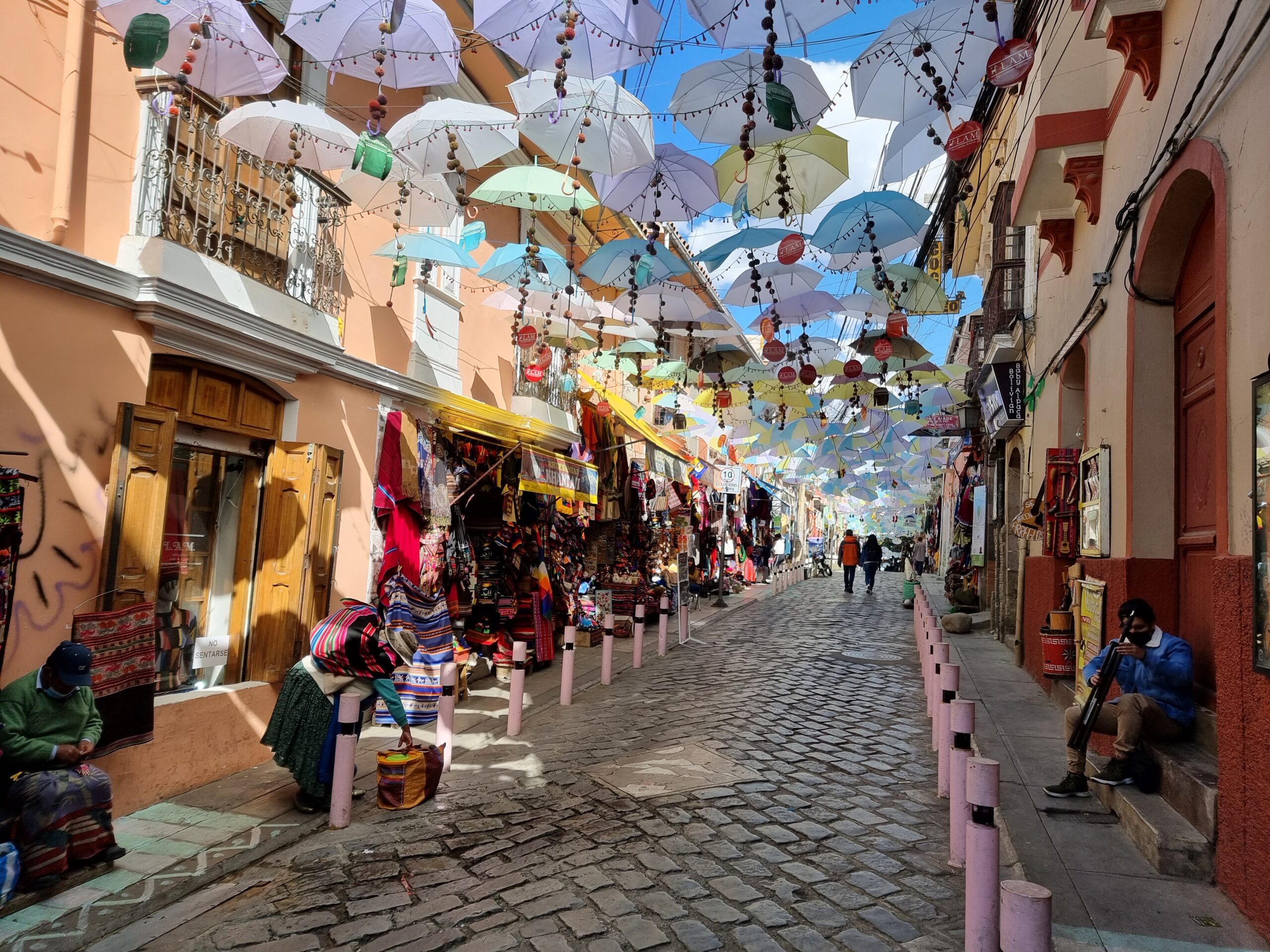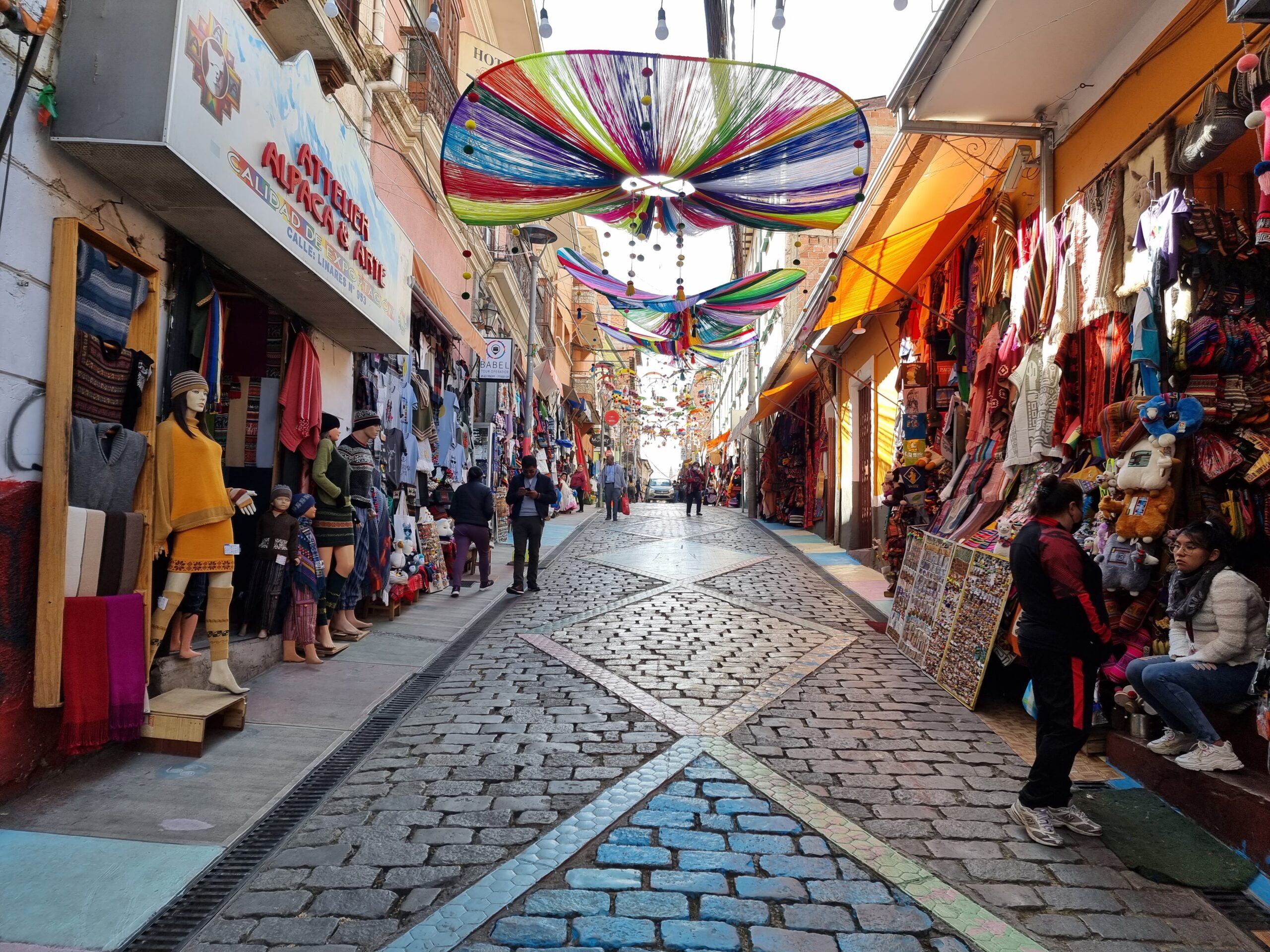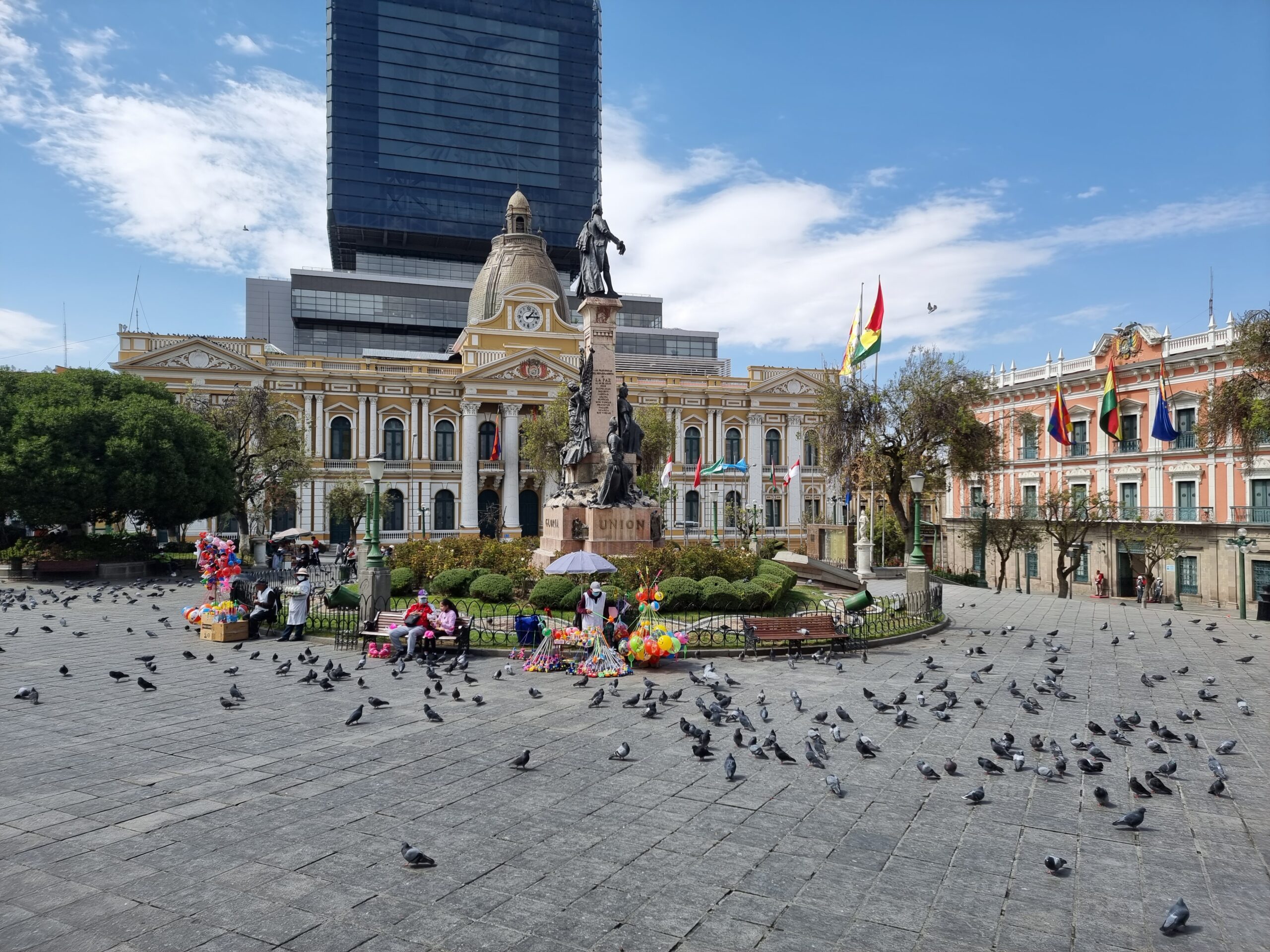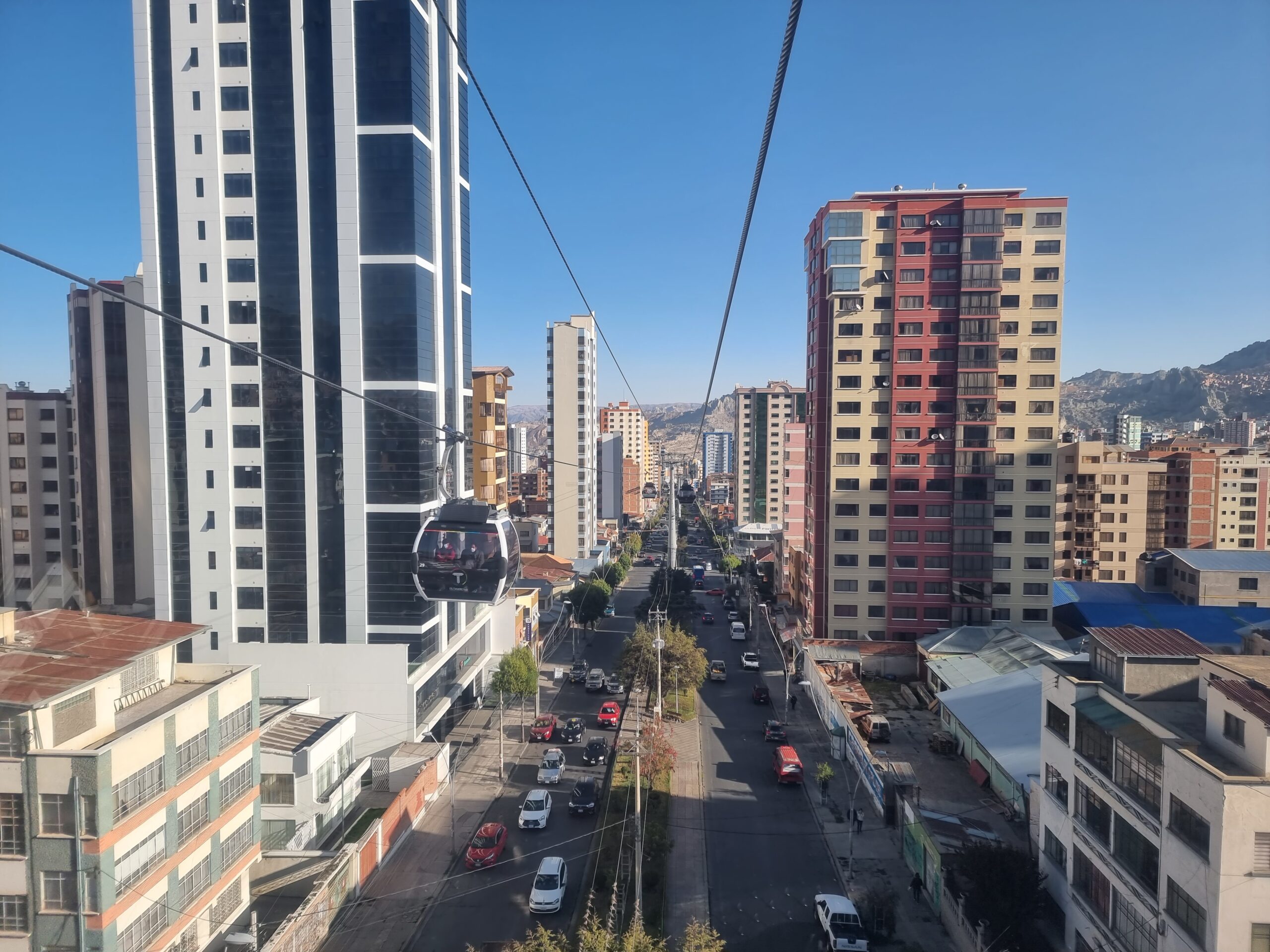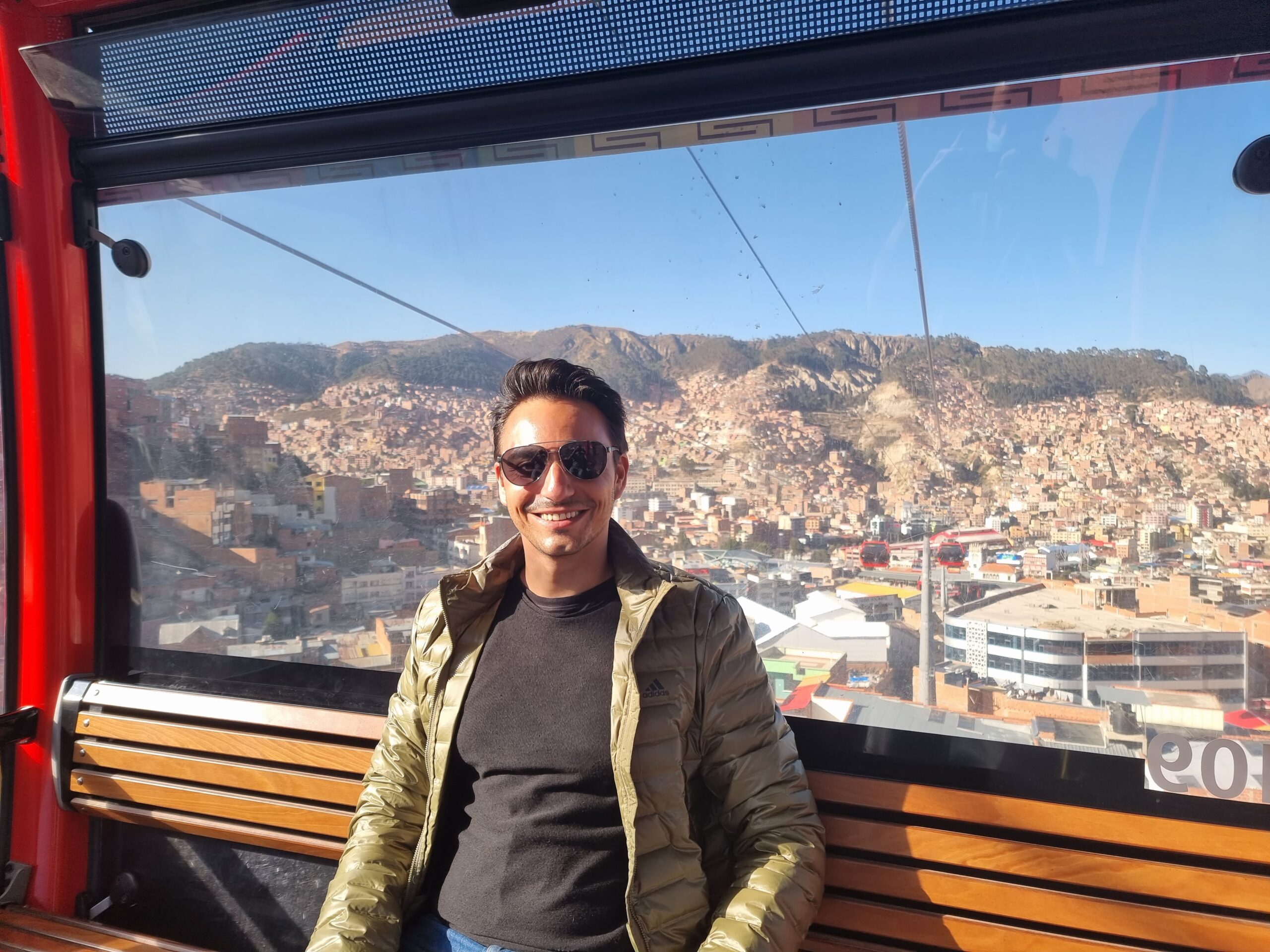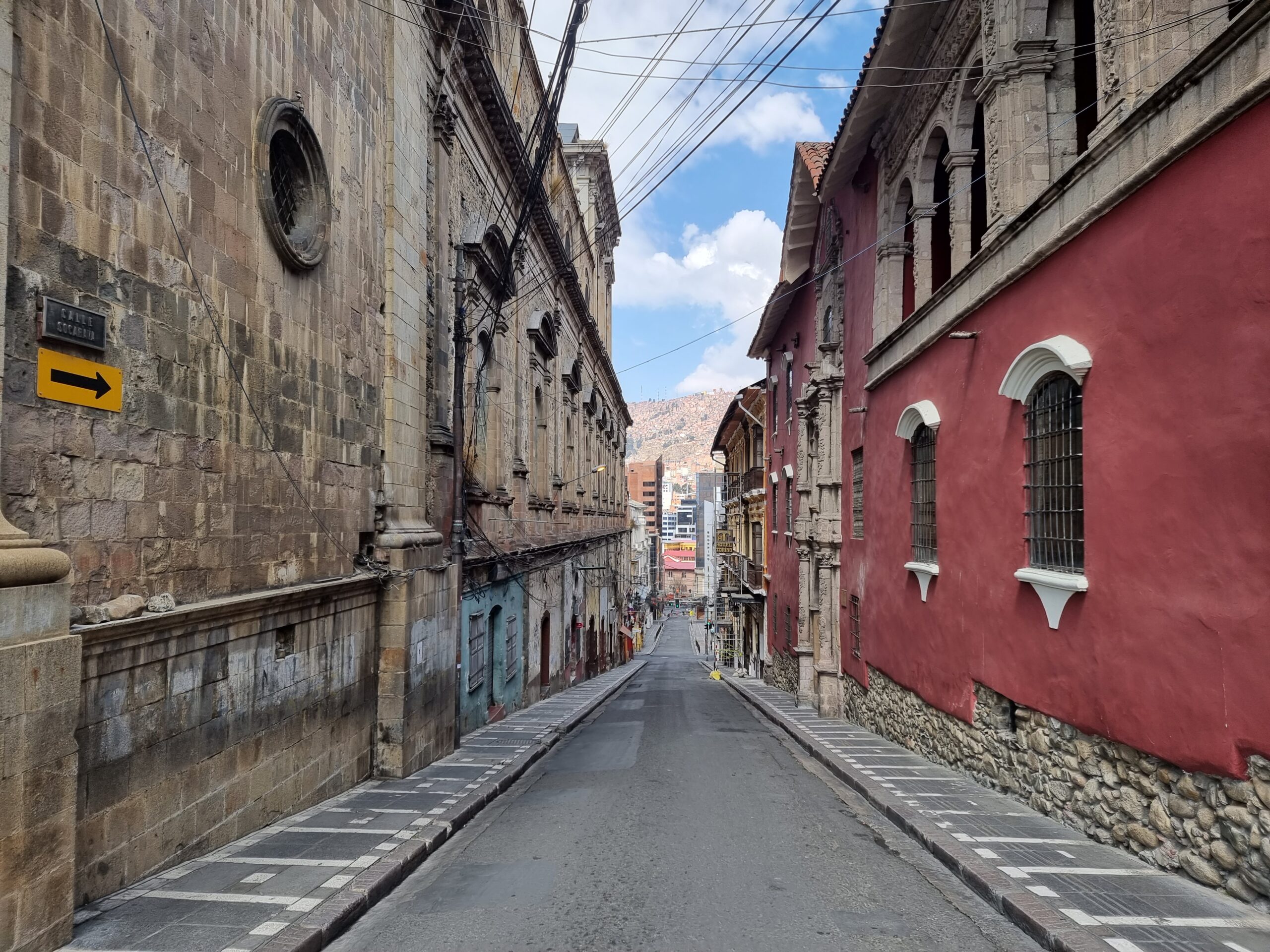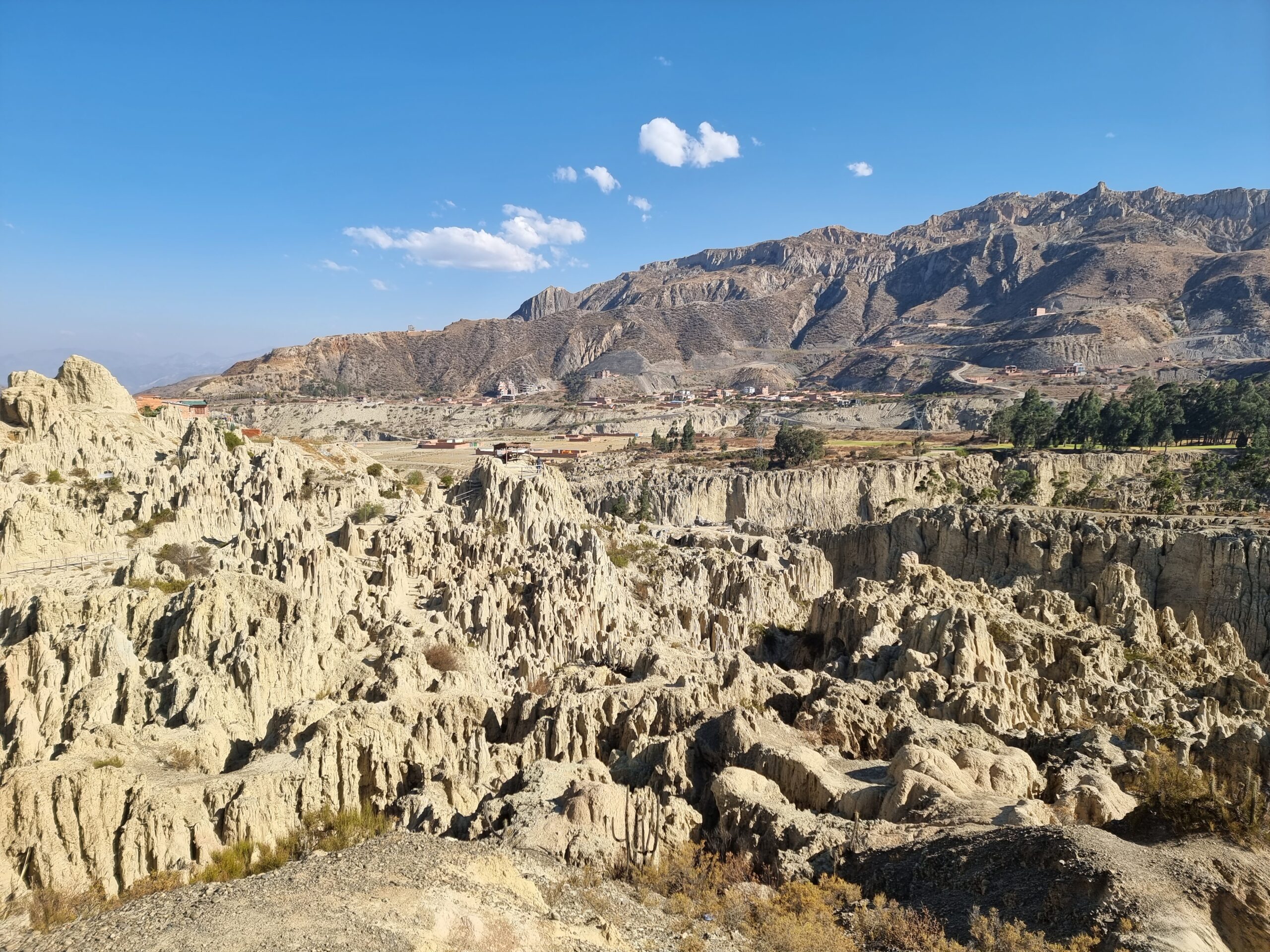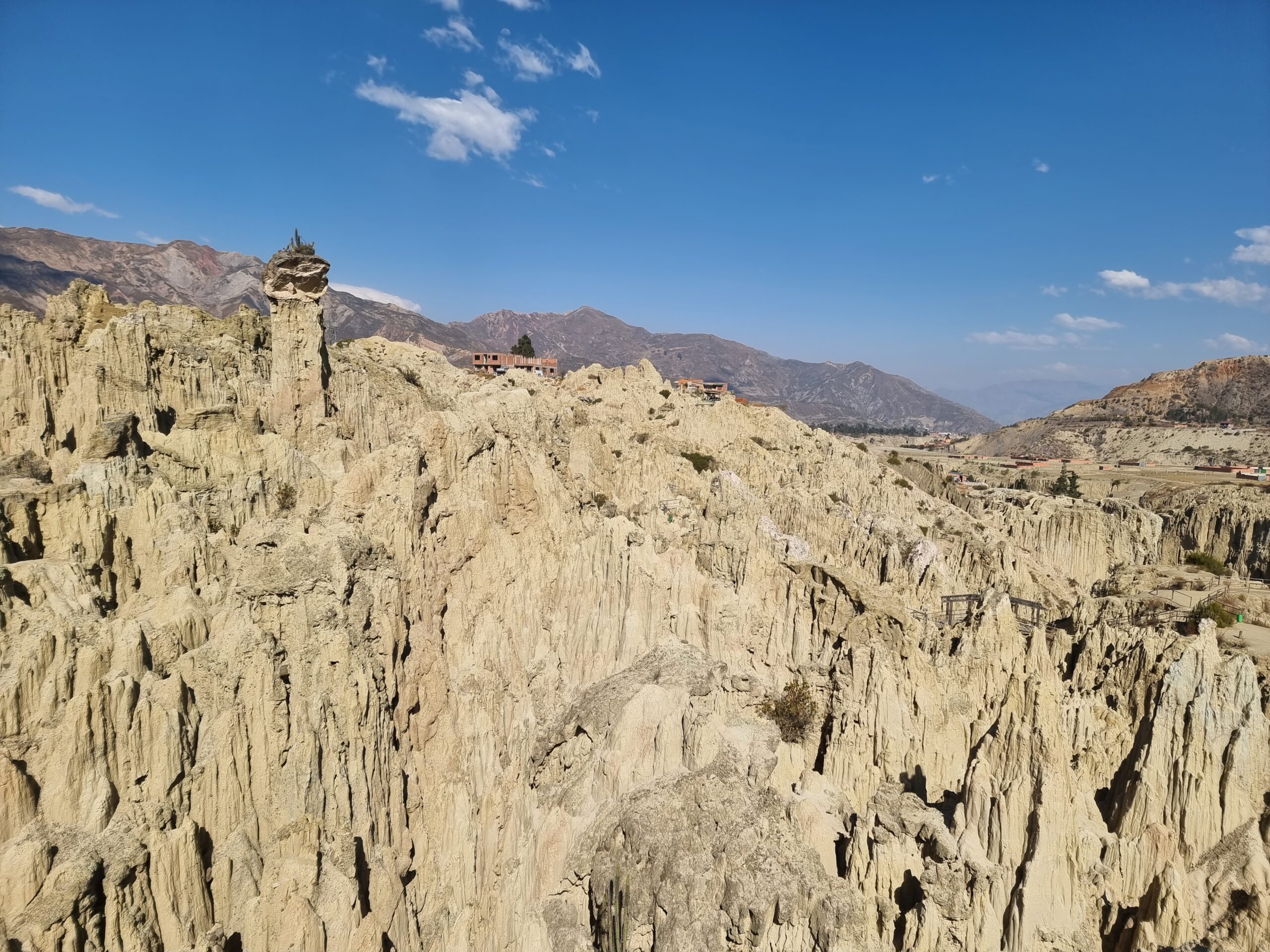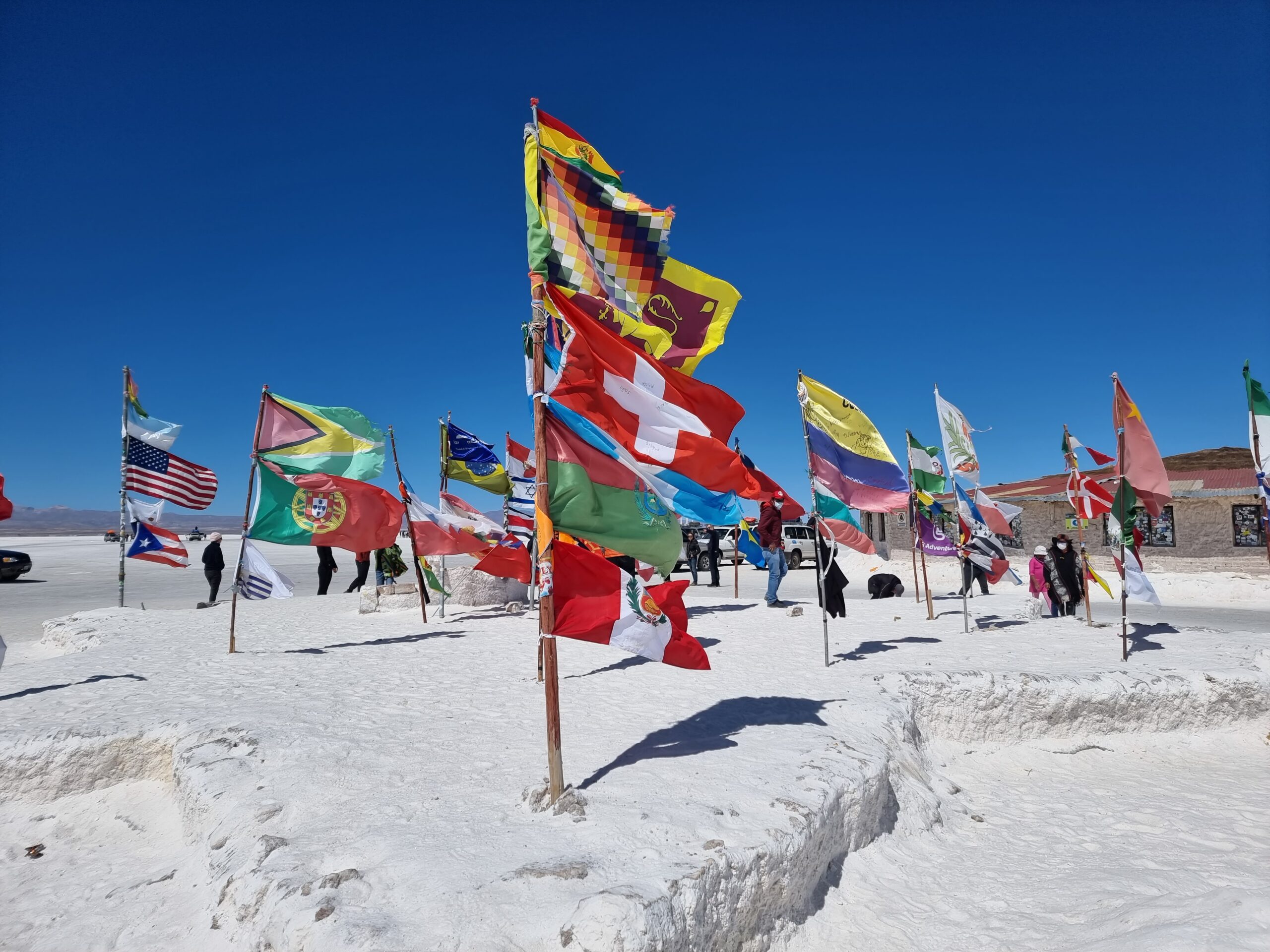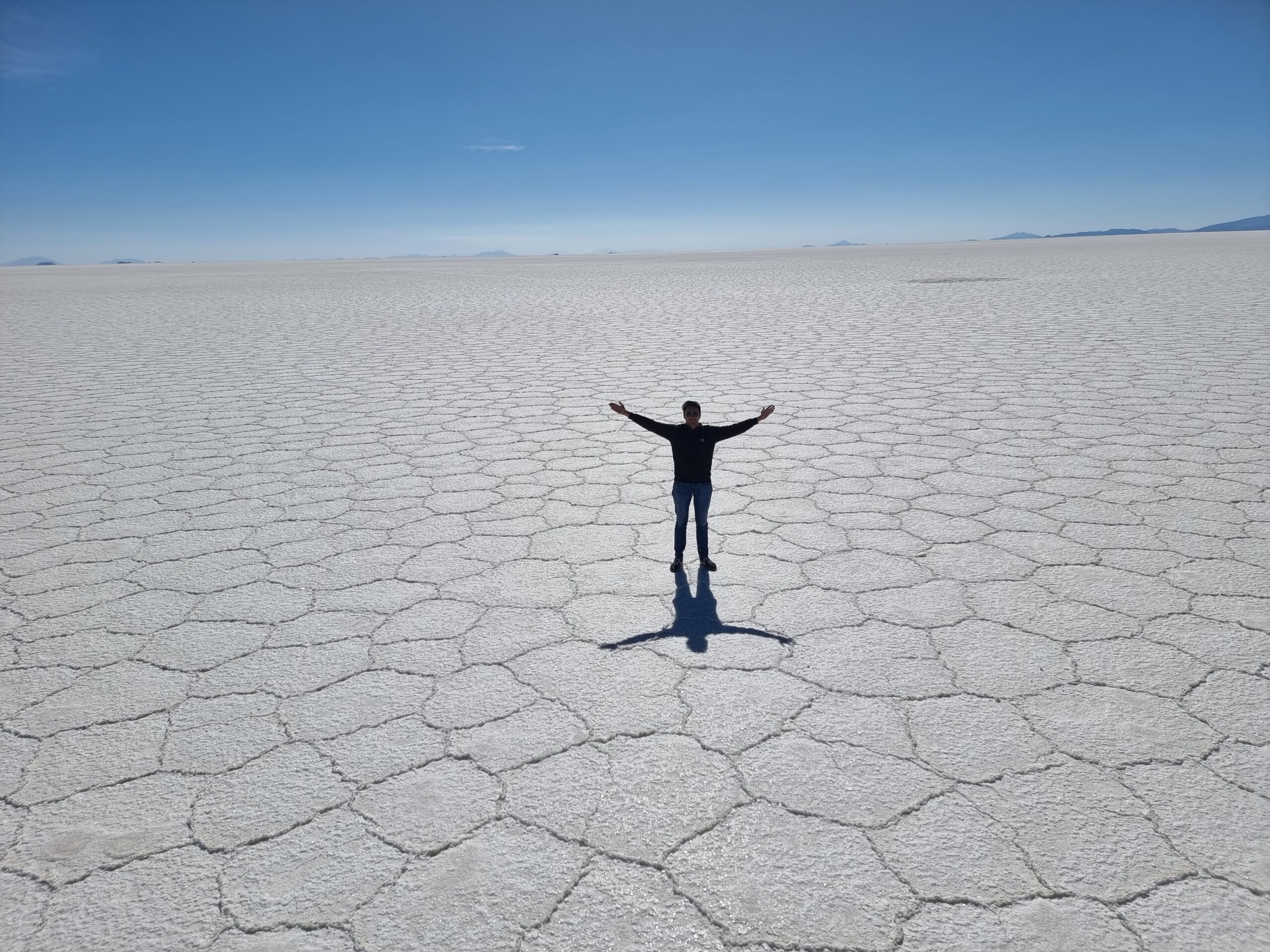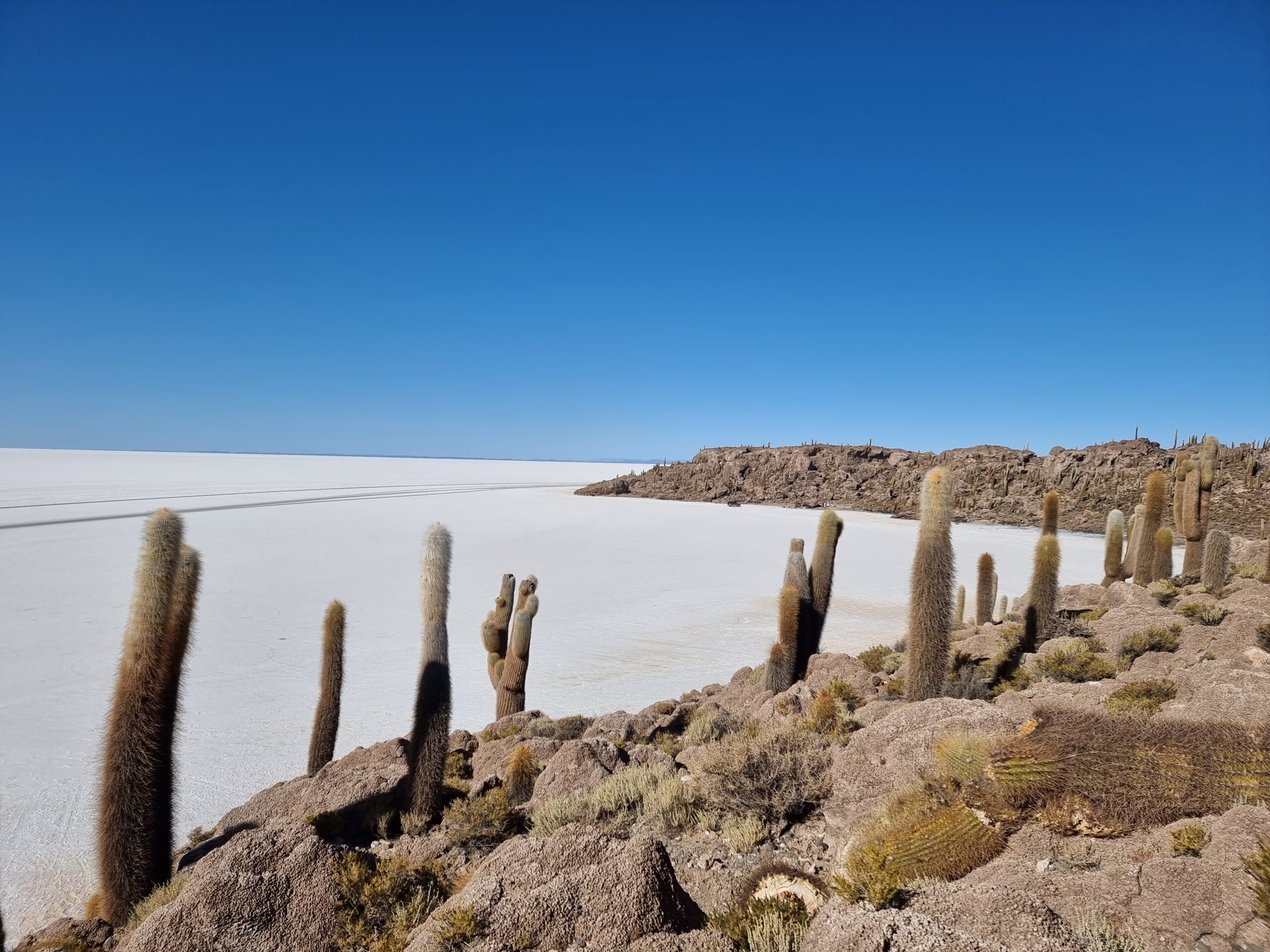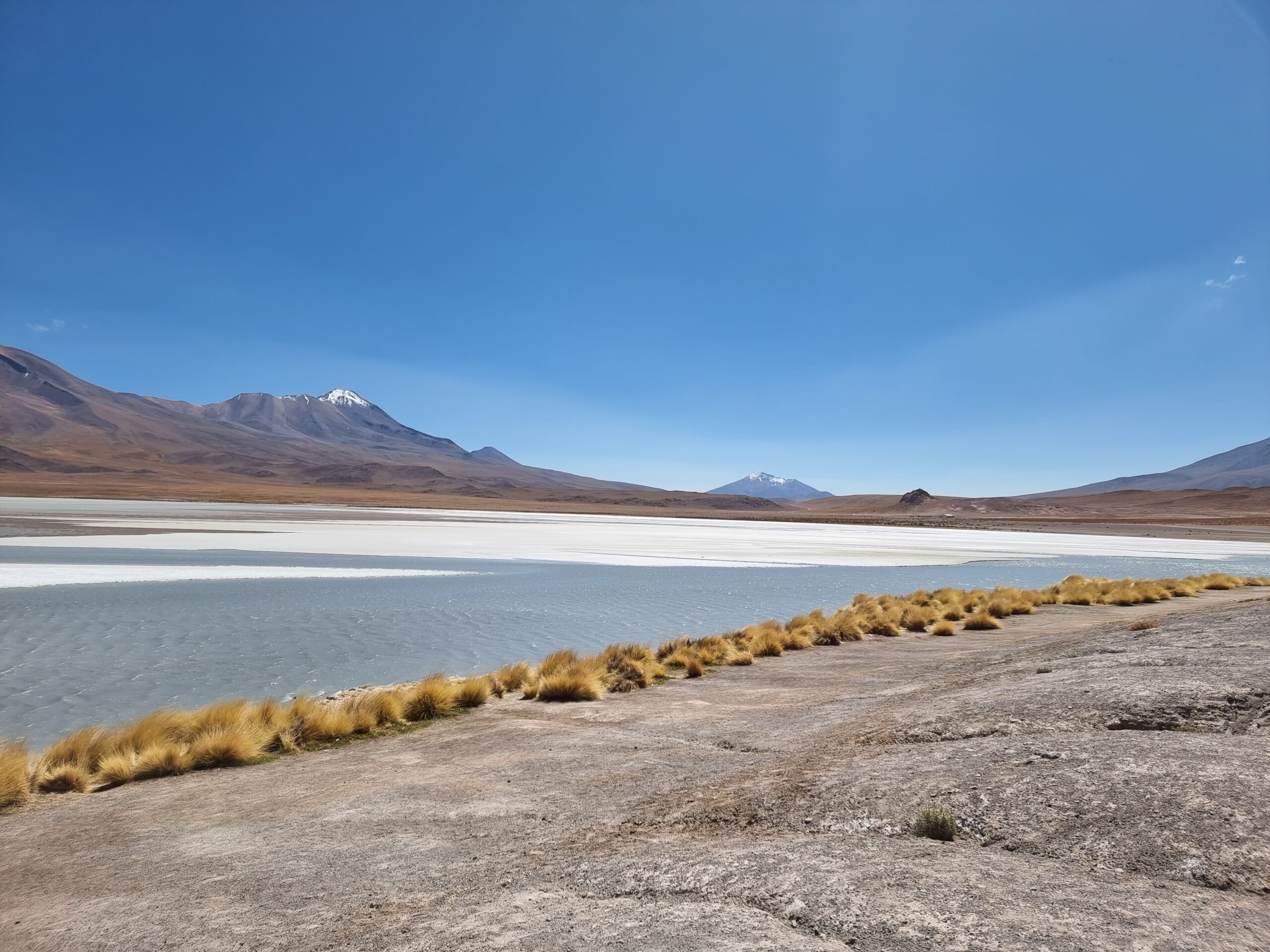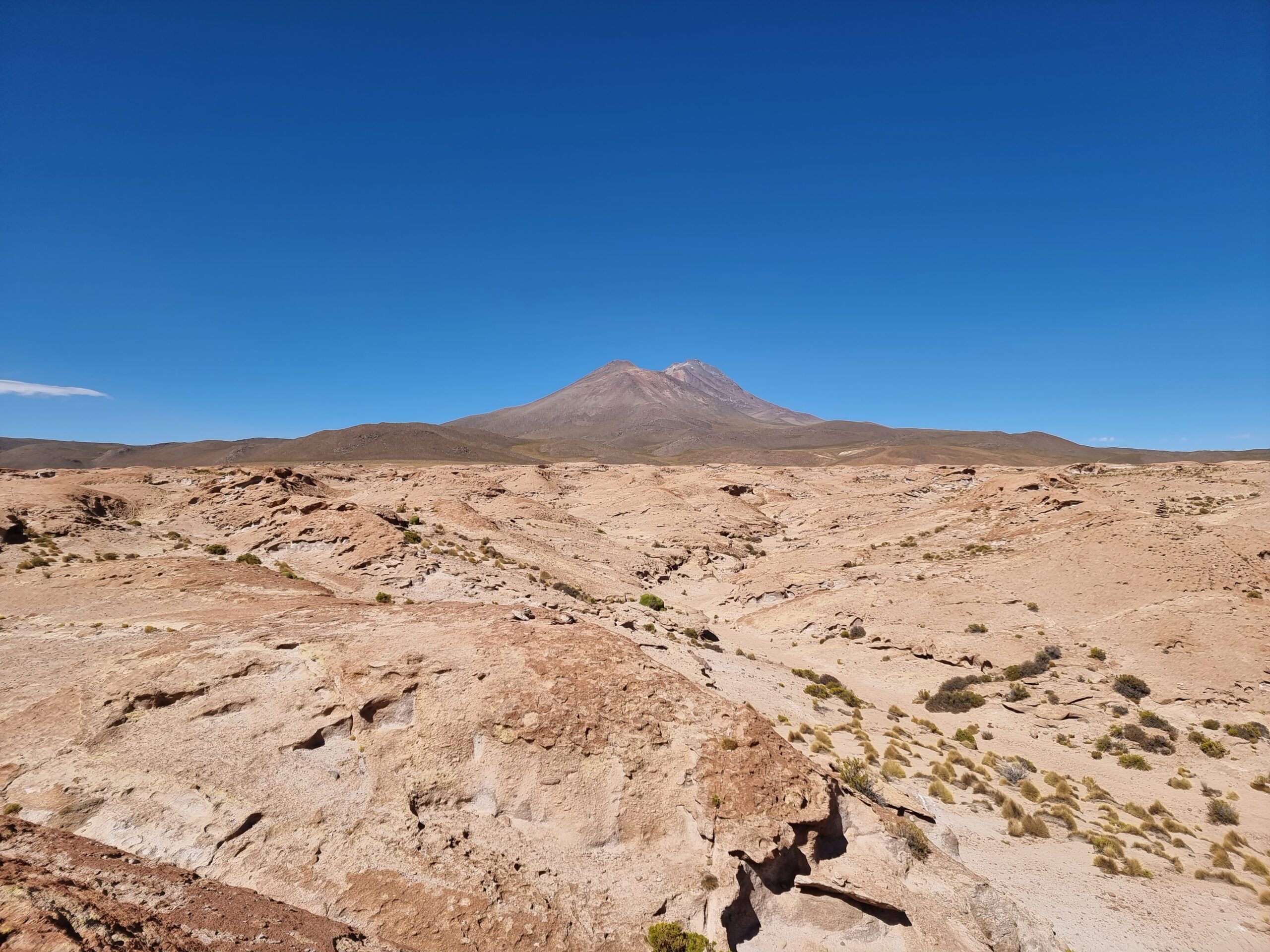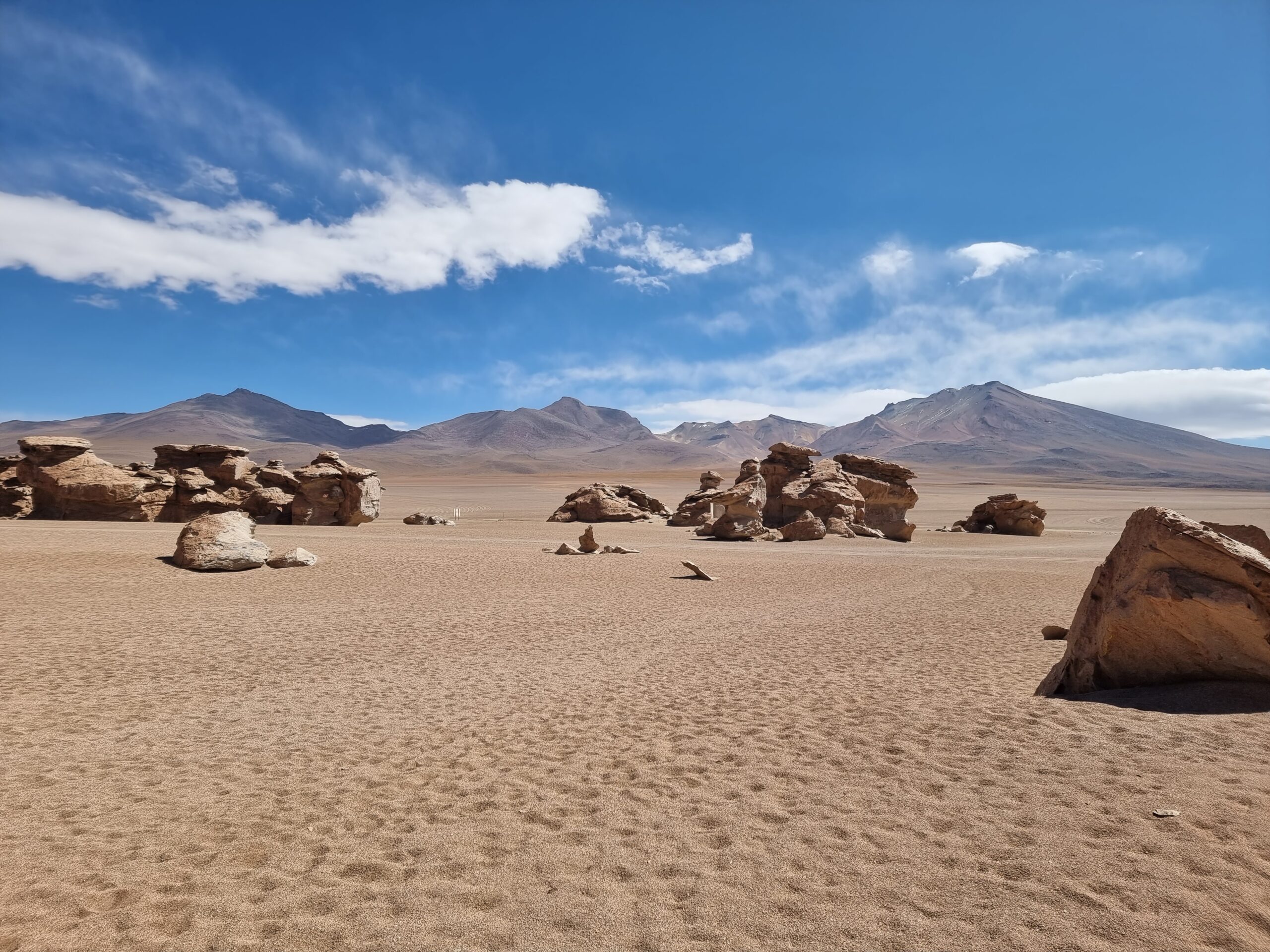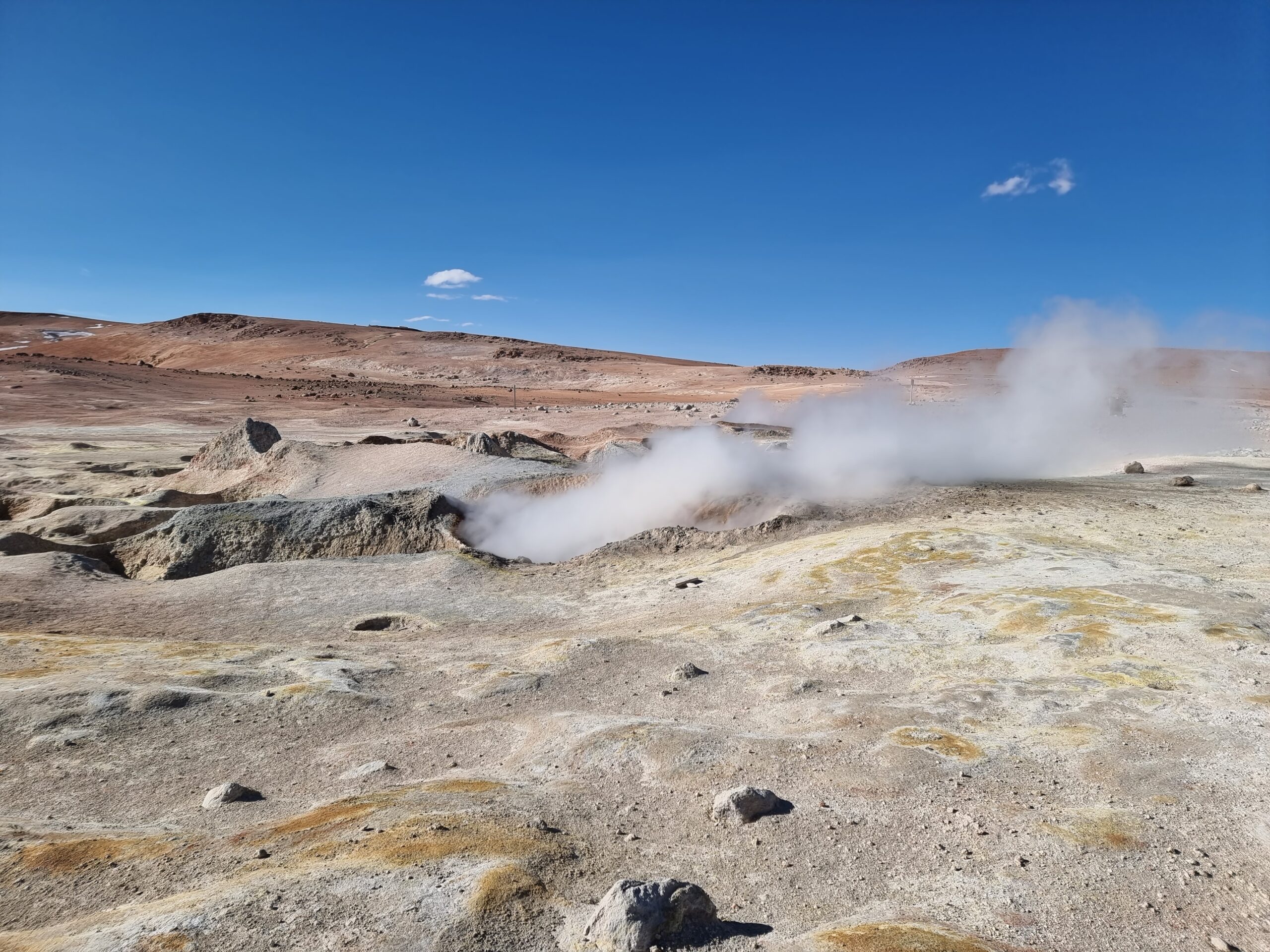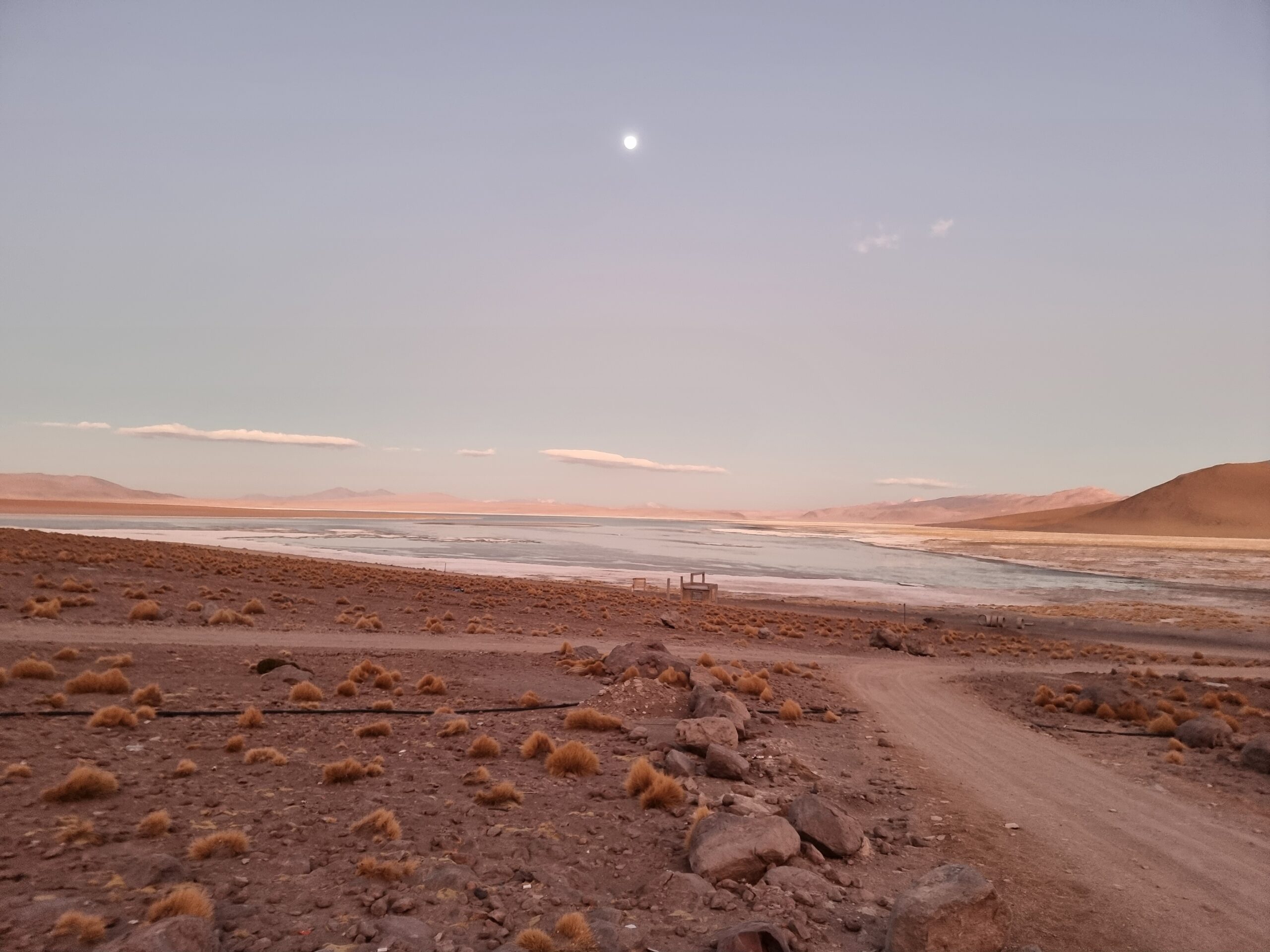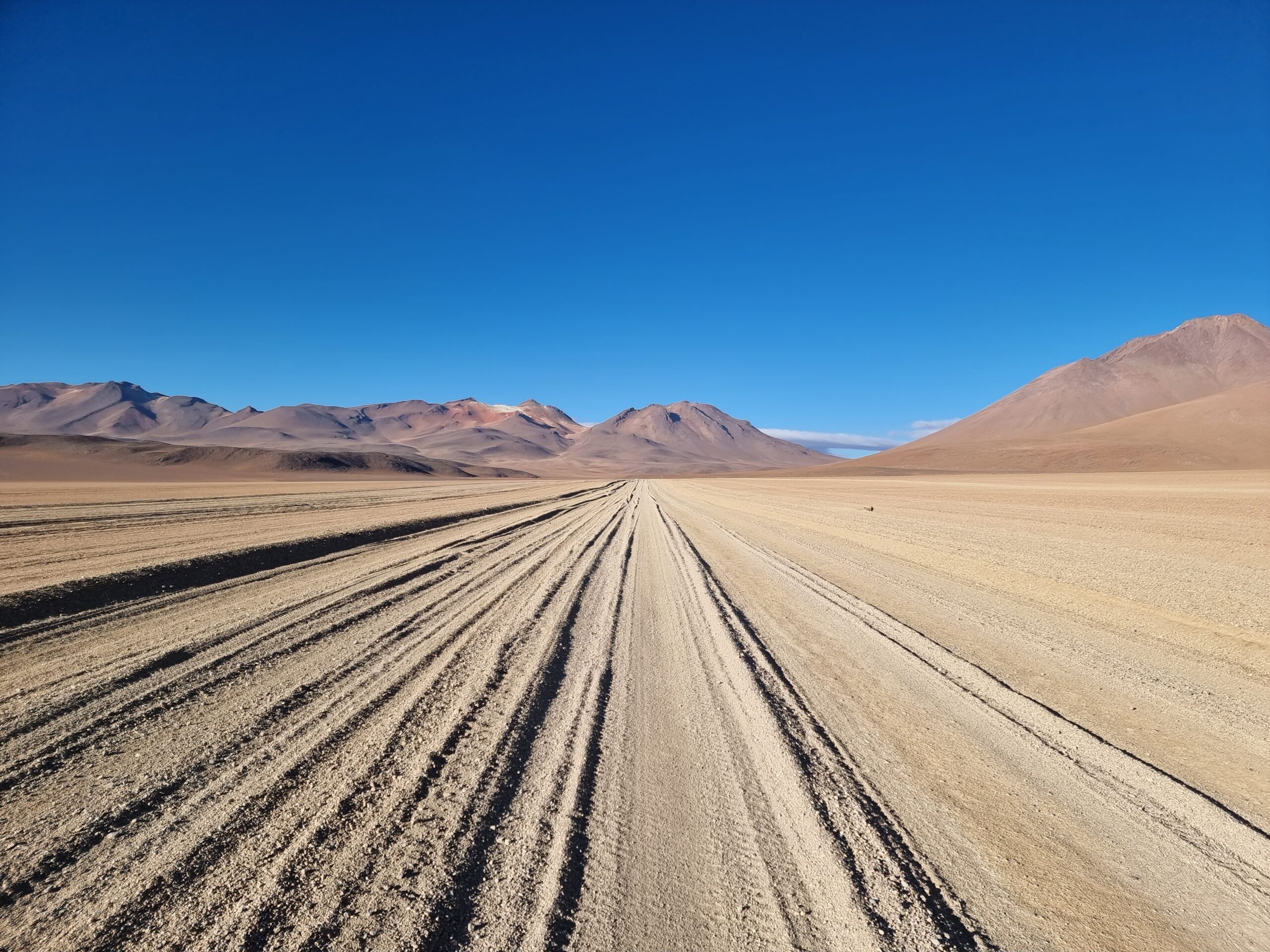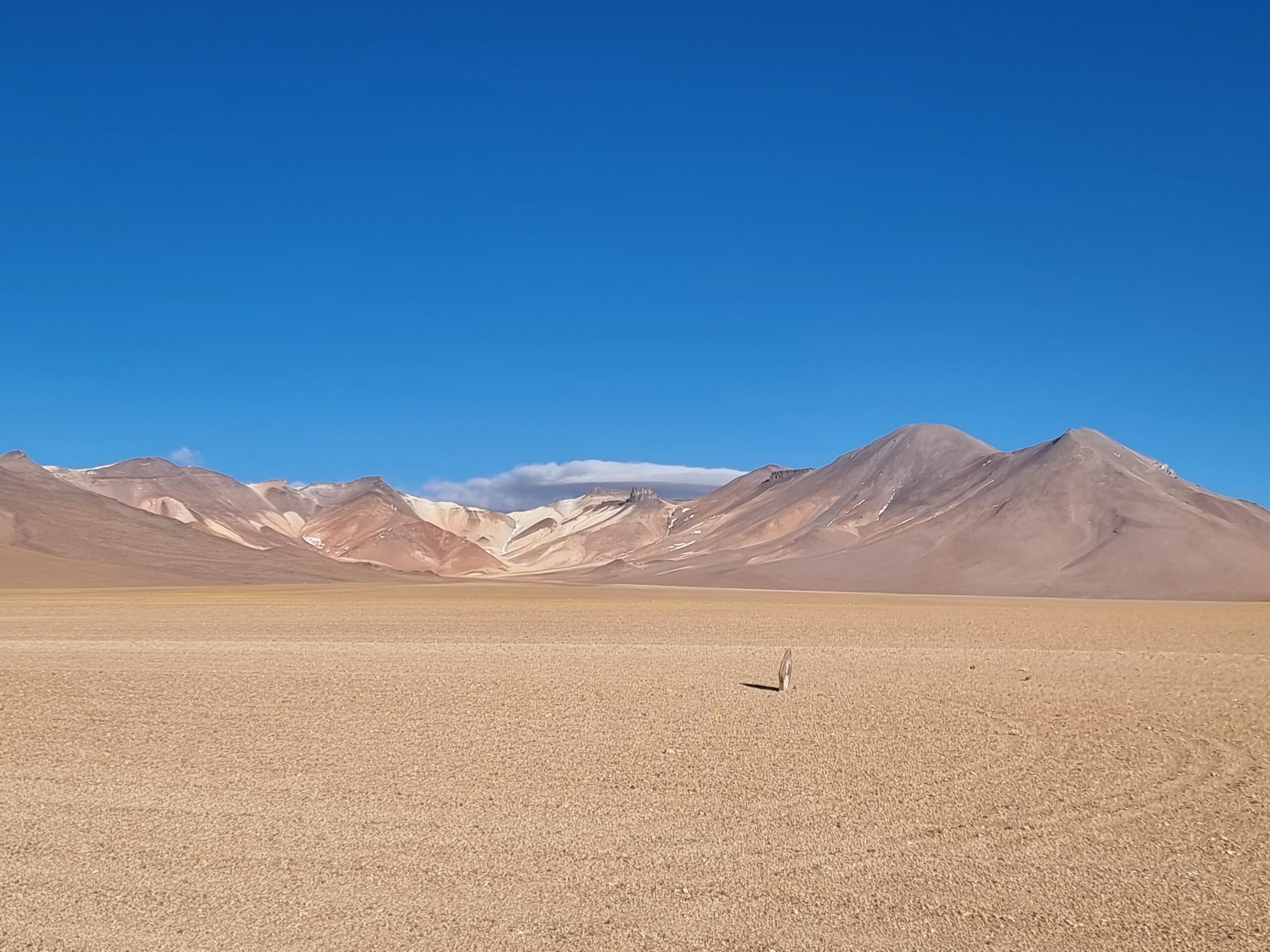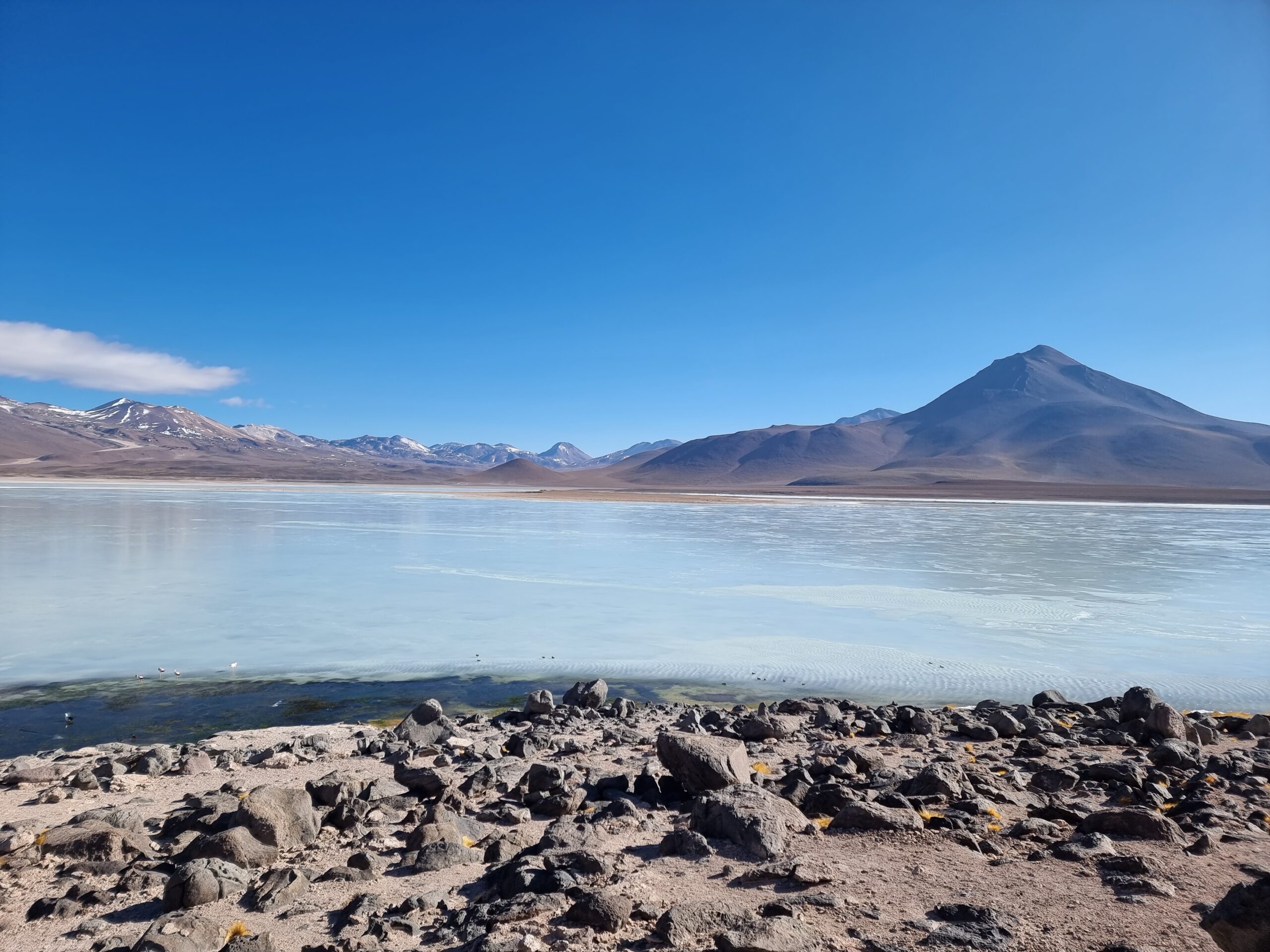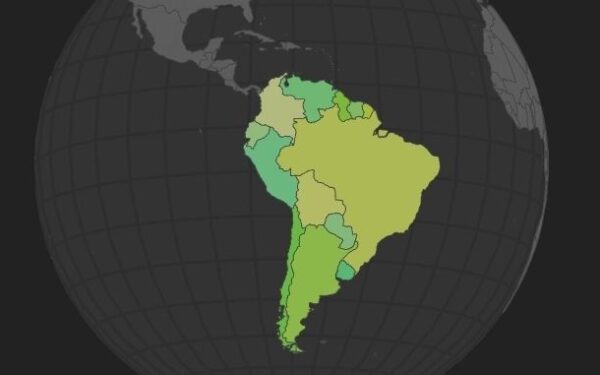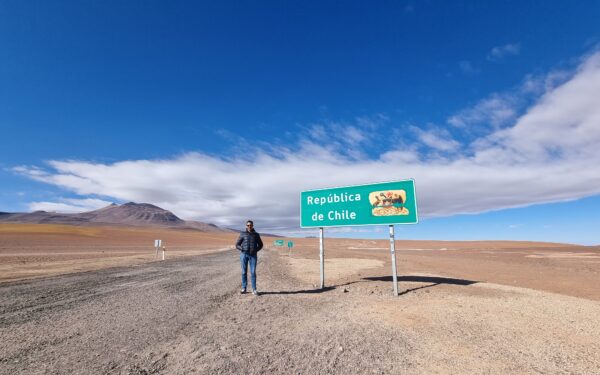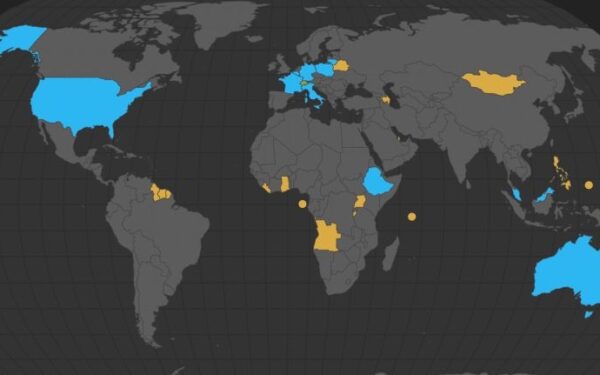Trip Report: Bolivia
Visited in September 2022
One of the most common questions I am asked about traveling is if anything bad has ever happened to me. The fact that I have already been to 140 countries, some of which are also considered not entirely harmless, obviously leads to the assumption that I have been robbed or attacked at least once.
The answer to this question is no. Although I’ve been ripped off a few times, nothing really bad has actually ever happened to me. Knock on wood. However, it almost did in my 139th country. In Bolivia, I only narrowly escaped a situation that could have ended badly.
A few days in La Paz
I landed in Bolivia’s largest city, Santa Cruz de la Sierra, on a Saturday morning. The flight from Madrid to Bolivia was with Boliviana de Aviación, Bolivia’s state airline. Definitely an interesting experience. The plane felt ancient and the seats looked more like a bus than an airplane to me. An entertainment system was of course not available. On the other hand, bus seats are usually more comfortable than airplane seats. That was also the case here. Hence, I slept a good seven to eight hours on the almost eleven-hour flight and arrived fairly rested in Bolivia.
The fact that I had not combined Bolivia with my Peru trip in 2018 was, in retrospect, a mistake. Many travelers visit both countries during the same trip. This would have spared me from the relatively long and expensive journey from Europe to Bolivia. In fact, the only European city with flights to Bolivia is Madrid (Air Europa is the second airline for this route). Moreover, Madrid flies to Santa Cruz only. This is the economic hub of Bolivia but rather uninteresting for most tourists. La Paz and Sucre are actually the cities that most tourists have on their itinerary.
Therefore, I also saw nothing except the airport of Santa Cruz de la Sierra. After passing a few hours, I had a connecting flight to La Paz. My Amaszonas flight landed in El Alto, about 30 minutes from La Paz. El Alto used to be a small settlement for locals looking for work in La Paz, but today it is – depending on the statistics – the second largest city in Bolivia (larger than La Paz itself). El Alto is located at over 4,000 meters and its airport is thus the highest international airport in the world.
La Paz is almost as high. Officially, the altitude of the city is 3,640 meters. However, La Paz is a bowl-shaped city, which means that it is surrounded by hills. Since the hills are also built with houses, the altitude of the city is between 3,200 and 4,100 meters, depending on where you are. La Paz is also often and incorrectly referred to as the highest capital in the world. In fact, Sucre is the constitutional capital of Bolivia, while the seat of government is in La Paz.
Capital or not, you can feel the altitude in La Paz. You are quickly out of breath and the first two to three days I had a slight headache. Some people wrote to me on Instagram that they had suffered quite a bit from altitude sickness in La Paz. I thought it wouldn’t affect me. After all, I spent a week in Cusco in Peru, which is also at 3,400 meters, and had no problems. La Paz was a different league, though. This was perhaps also due to the fact that I came directly from Europe to La Paz. In Peru, I was at least able to acclimatize a bit in Arequipa before arriving in Cusco.
I had planned four days for La Paz knowing that this is probably a bit much. However, I also planned to take it slower in Bolivia, since my last trips were a bit rushed. During these four days I explored the city and participated in certain activities. La Paz really has a lot to offer to tourists. My personal highlight of all the tourist attractions was the teleférico, the cable car of the city. The teleférico on the one hand brings people quickly from one place to another and on the other hand shows spectacular views from above.
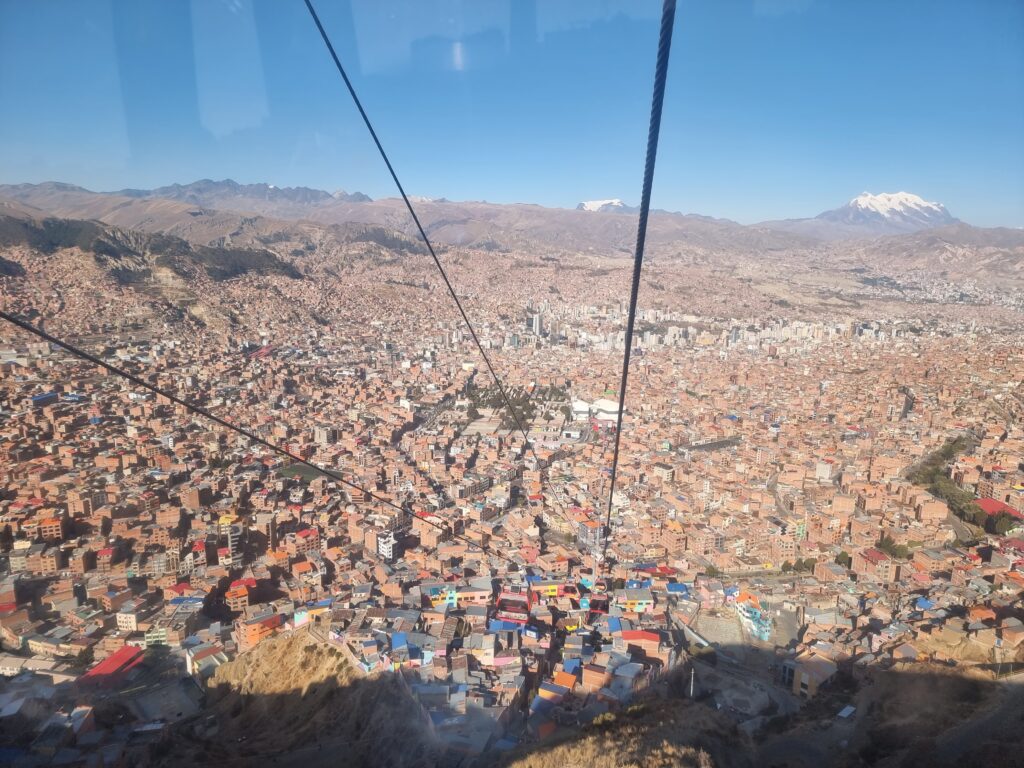
What I also noticed relatively quickly is that La Paz is a city where globalization does not seem to have arrived yet. You will not find McDonald’s or Starbucks here. Also otherwise La Paz does not look like a highly modern but rather an authentic city. You see many people in traditional clothing and street markets instead of people in suits and shopping malls. Somehow, with La Paz, one could think that the city has not yet arrived in 2022, and I mean that quite positively.
Furthermore, La Paz is a city with some beautiful alleys as well as plazas. I was also lucky to be in La Paz on a special day. Once a year, the city becomes car-free, which completely changes the character of La Paz. It is then much less hectic and chaotic and you can enjoy the streets much better than on a normal day.
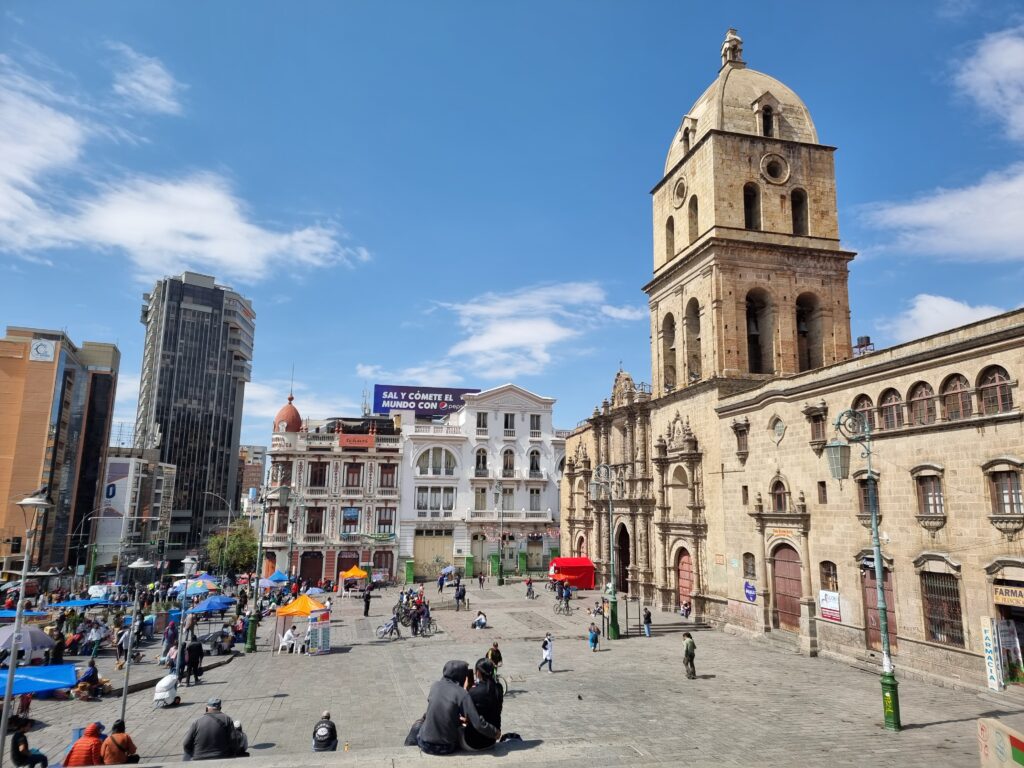
I also visited the Valley of the Moon, an area of unreal rock formations just 10km from town, and watched a Cholitas wrestling show. The wrestling show was a pretty bizarre event. There, indogenous Cholitas women “fight” each other and the fights have just as silly storylines as those of the WWE. It was a hilarious experience. Anyway, it is a big thing in Bolivia and more than worth it.
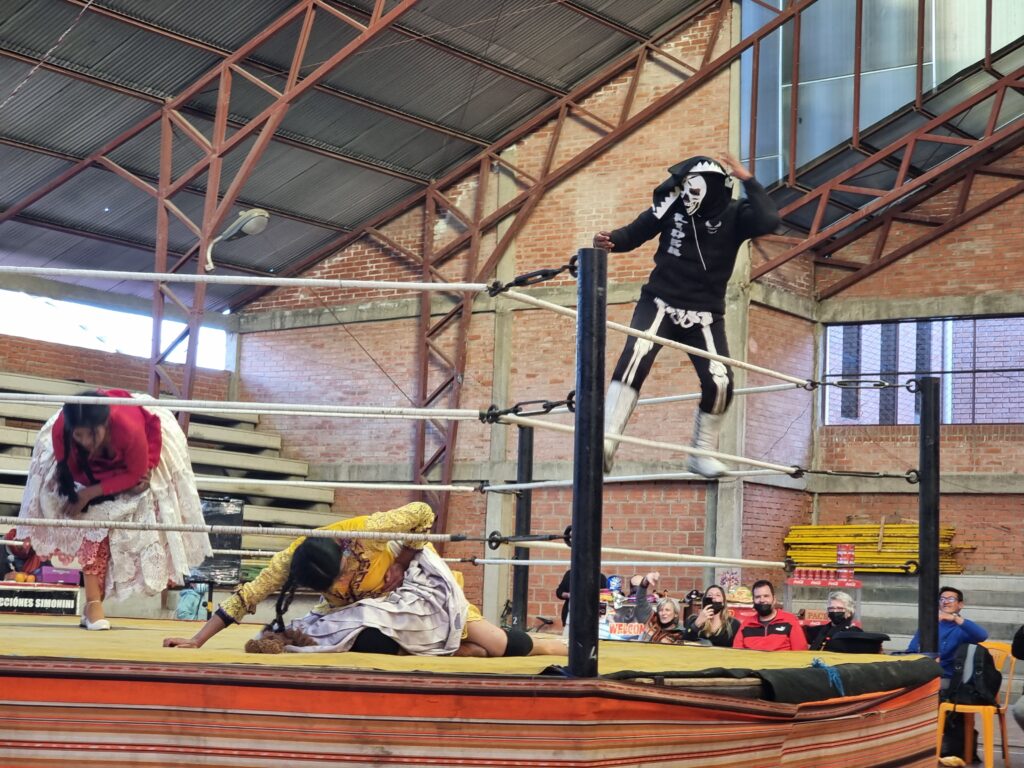
A few years ago there was another tourist attraction in La Paz, but unfortunately it is no longer possible to visit it. I am referring to the San Pedro Prison. This prison is one that is managed by the prisoners themselves and is virtually its own mini-city in La Paz. In the past, it was relatively easy to walk in and out as a tourist. Today, a visit is only possible with a lot of preparation (as I understand it, you have to be invited by an inmate).
Even though La Paz offers quite a few things, I must admit that I did not really get warm with the city. La Paz is a chaotic city with many people on the streets and the traffic is terrible. In the city center you are sometimes faster walking than in a car. Because of its geographical location, there are many viewpoints in La Paz where you can get a tremendous view of the city. From the ground, however, I found La Paz to be anything but beautiful.
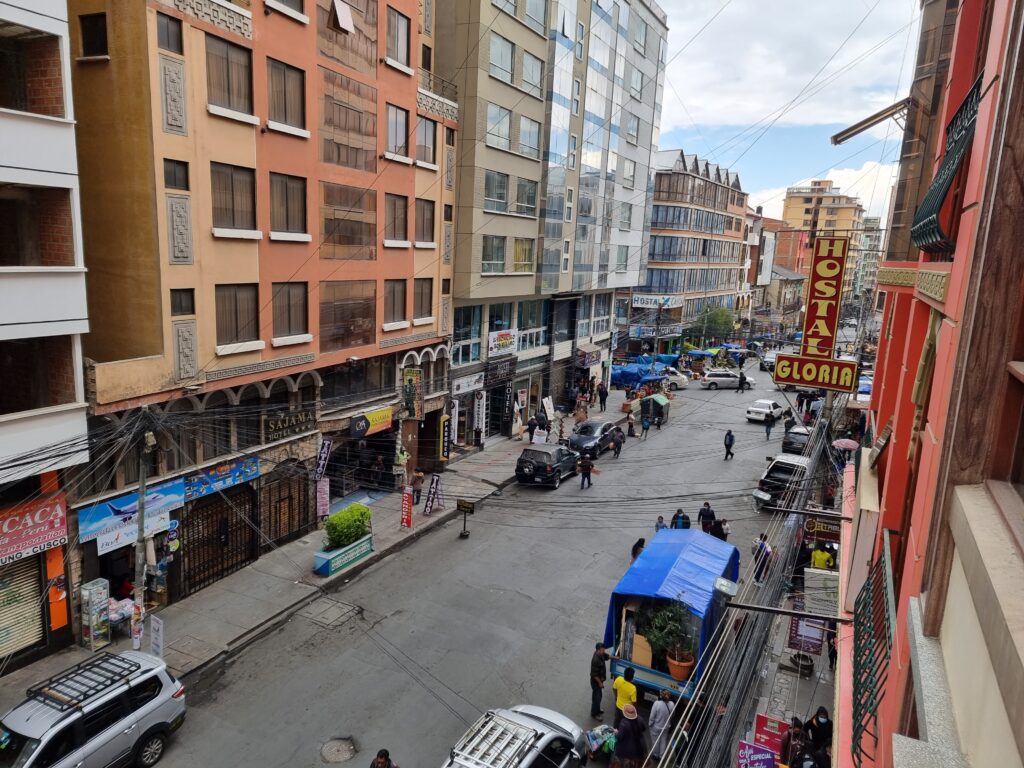
Moreover, it was also the bitter cold nights that made the city unpleasant (not that I expected anything else at an altitude of 3,600, but still…). That doesn’t mean that visiting the city was a waste of time. It’s still an interesting city. However, La Paz will definitely not remain in my memory as one of my favorite cities in South America.
Furthermore, La Paz, which means The Peace in Spanish, is not as peaceful as the name suggests. The crime rate is relatively high and as a tourist you have to be a little careful.
The scam
On my first day in La Paz, I almost fell victim to a scam that could have ended badly. It wasn’t just on my first day, but actually during my very first sightseeing activity. I took an Uber up the Mirador Killi Killi, one of many popular hills in La Paz that offers a beautiful view of the city.
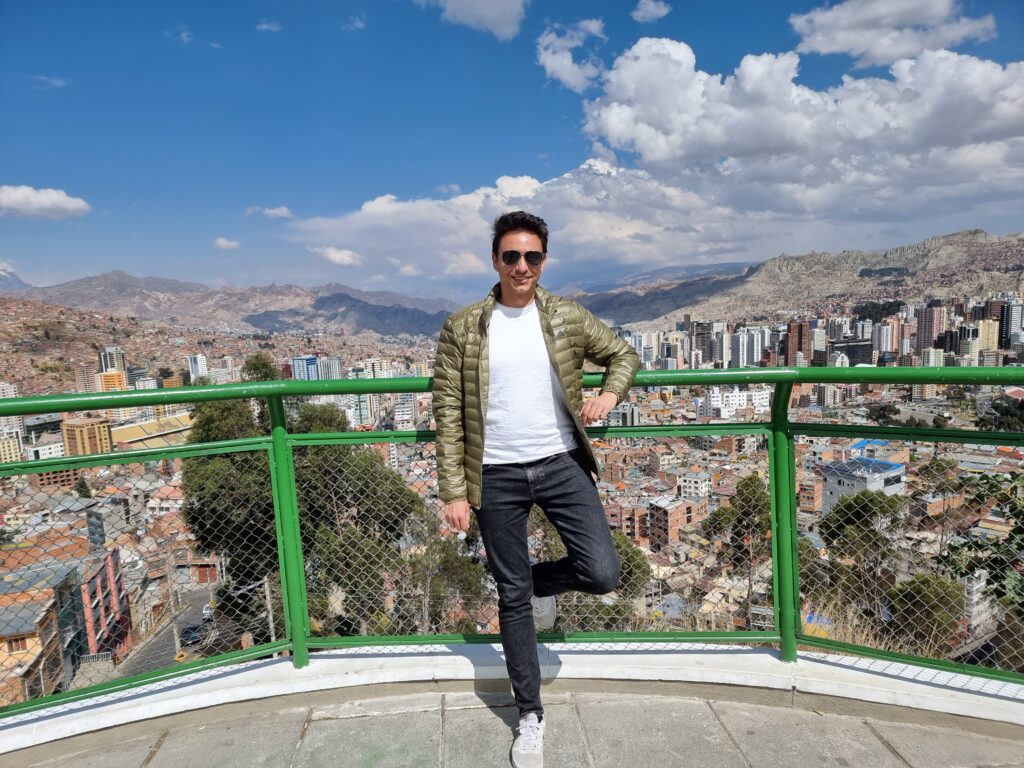
After hanging out there for a bit, I walked back into the city center. Google Maps showed me a walking time of about 15 minutes, so I was not far from the action. As I was walking down the hill, I noticed a young woman walking behind me. I didn’t really pay attention to her, but after she was following me for about two minutes she approached me.
She was wearing a baseball cap with Security written on it and introduced herself as someone who works with the police. Besides, she showed me an ID card on which I could read something with policía during my 1-second glance. According to her this Mirador Killi Killi was a place where drugs are sold. Especially to tourists. Therefore, she explained that her task is to control tourists who come from there.
I didn’t think anything of it yet and just said that she could control me if she wants. After all, I had nothing to hide. However, she then informed me that she cannot do this control on the street but that we have to go to a police station. She explained that I would receive a stamped document, which I could show at future police checks. With this document, the police then knows that I had already been checked and found to be OK.
She had to explain the last part to me about three times, because the entire conversation was in Spanish. My Spanish is sufficient for simple conversations, but it is not fluent. And as soon as it comes to any stamped documents, it’s well beyond my language level. The way I understood her, we would walk a block to the nearest police station for the check. From my point of view, this procedure was annoying, but I thought that I had time and I would just cooperate. Therefore, I agreed to follow her.
Then, out of nowhere, a taxi arrived and stopped behind us. The lady walked up to the driver, said “comisaría de policía” and got in. At that moment I knew that something was wrong here. Why would a police officer call a taxi to go to a police station? For me it was immediately clear: if I get into this cab, they will rob me.
I shook my head and said “no” several times and my facial expression was unmistakable: I know what you crooks are up to. I prepared myself to have to discuss the matter (in the worst case with both of them) for a longer time, but the taxi drove away immediately. It was obvious to them that they were busted and had to leave the place as quickly as possible.
In addition, I must say that the whole thing happened in broad daylight in a street where there were both pedestrians and cars. For this reason, I was not afraid that my refusal to get into the cab might encourage them to threaten me with a gun or something. However, what also made me very skeptical in the first place was that the car was in a pathetic condition and the taxi driver looked like he had just been released from San Pedro Prison. It was another clear sign that something was not quite kosher.
Later I read that this “fake police” scam is common in La Paz. This scam is also described online exactly as it happened to me: a fake police officer approaches a pedestrian, then “coincidentally” a taxi comes by and the victim enters it. The scammers then drive the victim to a deserted area, where he or she is robbed and forced to withdraw money at an ATM. In my case, the prey of the two would have been something like this: >$400 cash, a cell phone worth $1,300, two credit cards with a withdrawal limit of $1,000 each, and a debit card that had about $600 on it. That would have been a gigantic payday for the two.
After this situation, I followed my further daily routine normally and it didn’t keep me thinking for long. My emotional state was also not fear or discomfort, but rather astonishment that such a thing (almost) happened to me. For me, however, this situation was also a friendly reminder that I am not as invincible as I might have thought.
Having now been to some countries that are really considered dangerous (Afghanistan, South Sudan, Haiti, Somalia, etc.) as well as a variety of countries that have high crime rates and nothing ever happened, I probably had the wrong feeling that it never will. I have let my guard down completely in recent years because of this. I rarely prepare for possible scams anymore, and I also always walk around with pretty much all of my valuables. Perhaps, that was a necessary sign that I should be more careful again.
The Salar de Uyuni
Nevertheless, Bolivia remains a country that practically all tourists experience without negative incidents. The biggest danger in Bolivia is not street crime anyway, but traffic. More precisely, bus rides. After four days in La Paz, I needed a night bus to Uyuni and already when I googled for bus tickets, the first search results were warnings about the many bus accidents and some survival tricks if you take the bus in Bolivia (e.g. sit in the back because the chance of dying in a crash is greater when you have a seat in the front).
After the receptionist at my hotel recommended the bus company Cruz del Norte, I booked a ticket there, only to learn the next day from another receptionist at my hotel that I had booked with the worst possible company. As a consequence, when I booked the Salar de Uyuni tour, I immediately bought a second bus ticket. The bus company was called Roadrunner and in retrospect I can only say that this 10-hour bus ride was great.
The Salar de Uyuni was the place I was most looking forward to during this trip. The largest salt desert in the world can be visited either as a 1 to 4-day tour, although the day-trip as well as the 3-day tour seem to be the most popular options. For me, it was clear that I wanted the 3-day tour. Still unclear to me was whether I should book the tour when I arrive in Uyuni or in advance. But a fellow traveler in La Paz suggested me to book the tour beforehand. After all, you arrive at 6am at -7°C in Uyuni. The last thing you want to do is to shop around and find the best offer. This tip turned out to be valuable in retrospect.
Since I don’t want to go into too much detail about the booking process, here are a few useful hints:
- No matter with which company you go, you see more or less the same things on every tour. The difference lies in the quality of the vehicles and partly in the accommodations, however, most companies use the same hotels.
- I contacted the most reputable tour operators in advance and asked for a quote. The prices were between $190-250, so rather in the upper segment. If you go with a Spanish-speaking guide, you can find tours from $100.
- the Salar de Uyuni tours seem a bit like safaris in East Africa. You book with a company, but may end up going with another company.
- In my case, I booked my tour at the tour desk of the Wild Rover Hostel. Simply for the reason that I thought it would be guaranteed to be with young, English-speaking tourists on the tour. Wild Rover works with the tour operator La Perla Bolivia. However, the tour was in the end with Quechua, one of the most well-known providers. It was great!
- The price for the 3-day tour was $210 including accommodations, food, and the transfer to San Pedro de Atacama. If you book directly through Quechua, the tour even costs only $195!
- The 3-day tour is in reality rather a 2x half-day and 1x full-day tour.
- I recommend finishing the tour in Chile and not going back to Uyuni. The difference is that you either finish the third day at 9:30 and then drive to San Pedro de Atacama (arriving 10:30-11:00) or you drive another 6-7 hours back to Uyuni, from where you still have to take the night bus to La Paz.
The tour started at 11:00 and the first stop was the train graveyard right next to Uyuni. Sounds actually exciting, but was rather underwhelming to be honest. On a field you can see a long, rusty train, next to it are more train cars. On, beside and in these rusty train cars are then hundreds of tourists. If this place wasn’t so terribly crowded, it might still be cool. So I found this stop rather unnecessary.

After a short drive, you spend the rest of the day on the salt flats and this place is just terrific. Places that I have seen a hundred times online, I sometimes find in reality no longer THAT exciting. The salt flats, however, have clearly exceeded my expectations. In Argentina, I had already visited the Salinas Grandes near Salta a year earlier. The Salar de Uyuni is however again completely different league.

During the afternoon we went mountain biking over the salt flats, visited an island with trees and plants in the salt desert and took the usual silly photos that you often find on social media. I found all the photo shoots with the dinosaur, the Pringels box and so on a bit ridiculous, but I think for many this is a highlight of the Salar de Uyuni tour.
By the way, I was warned before the tour by fellow travelers in La Paz that the weather in the Salar de Uyuni would be relatively tough. However, the first day was quite pleasant. The altitude of the places you visit that day is somewhere around 3,600 meters. Throughout the day it was sunny and not very cold. After sunset, however, it gets quite freezing. The accommodation that night was the better of the two, although it was relatively chilly there too.
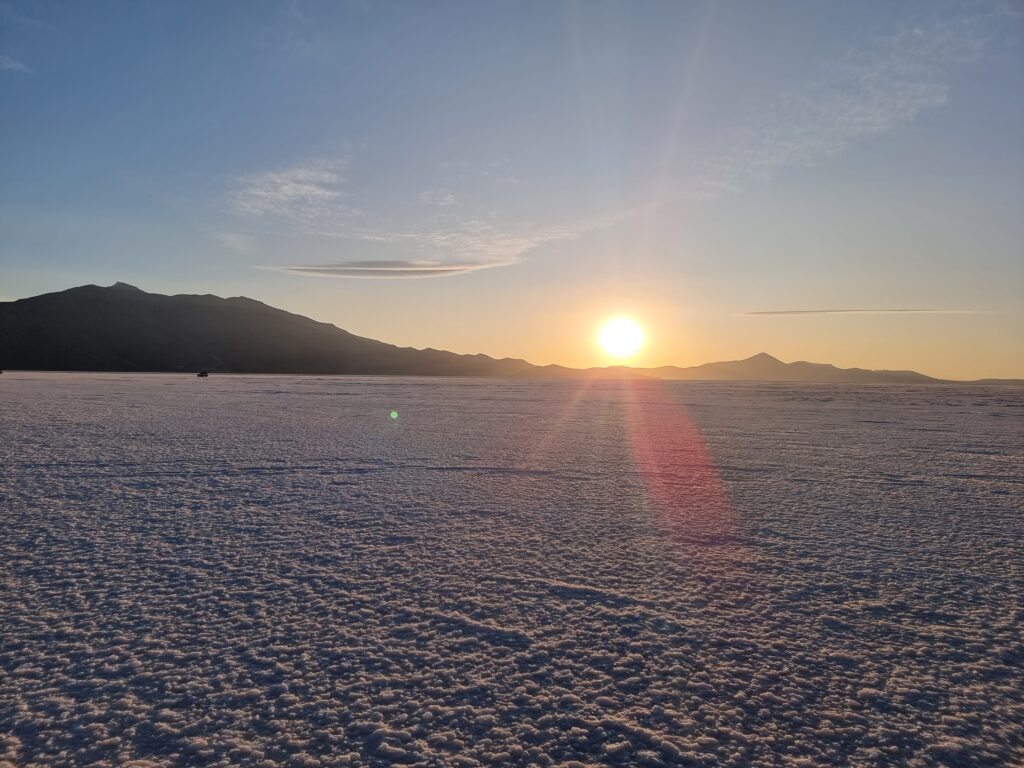
The one-day tour goes back to Uyuni instead of the accommodation and ends there. Those who book a multi-day tour will then enjoy completely different landscapes on the second day. On this day you will see mainly lagoons, one looking more beautiful than the other.
The weather on this day was much harsher than the first. This day takes place practically continuously at over 4,000 meters. At one point you are even at 5,000 meters and the accommodation is at 4,400. It is mainly the rough wind that makes the weather unpleasant. Still, the sights are absolutely stunning.
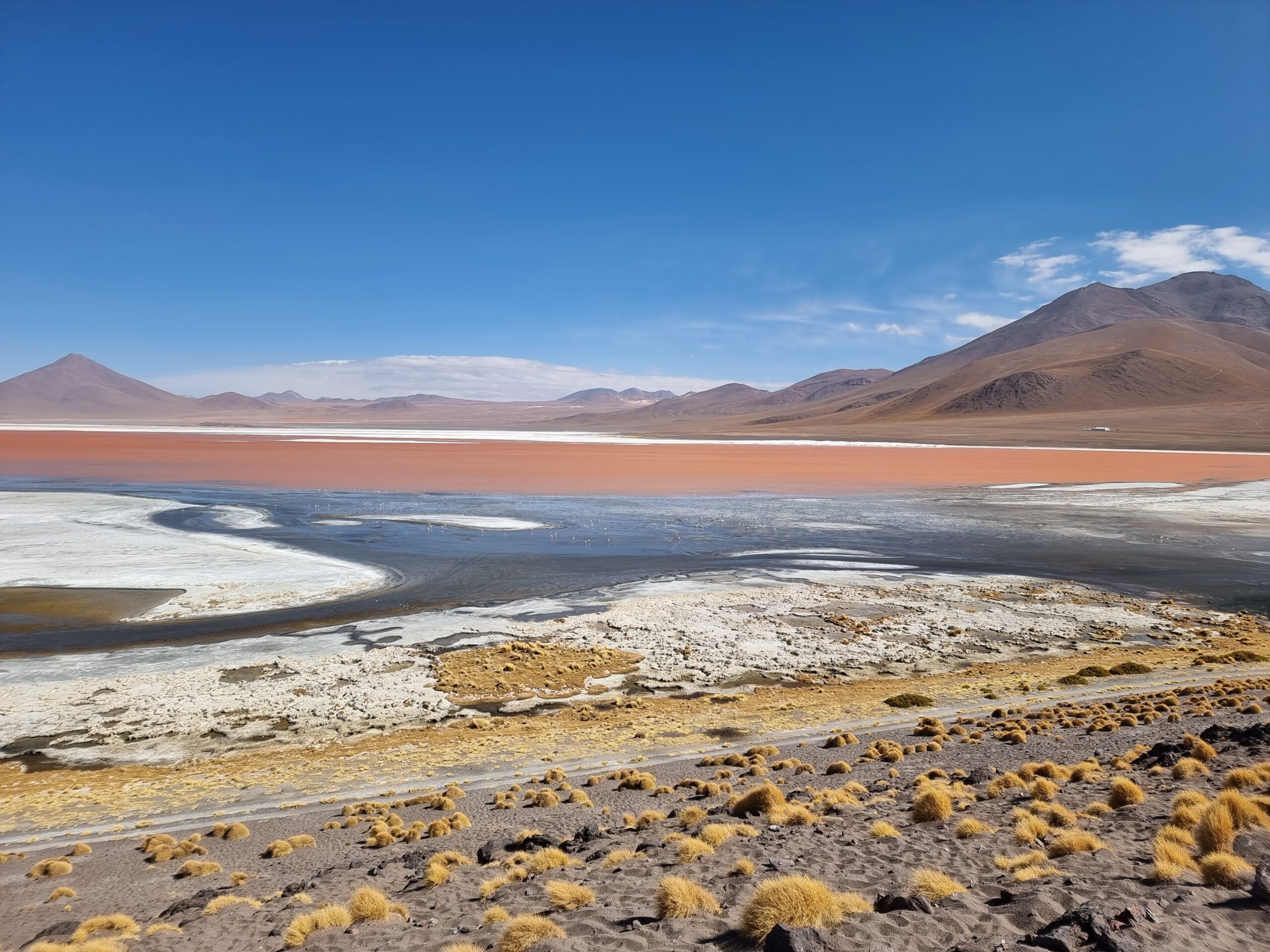
Besides the lagoons, we also visited a geyser and could see the many volcanoes from the distance. In addition, on this day you still have the opportunity to see the wildlife of the Bolivian Altiplanos. We were lucky to see viscachas (also known as Andean rabbit), flamingos plus occasionally the llama-like vicunas.
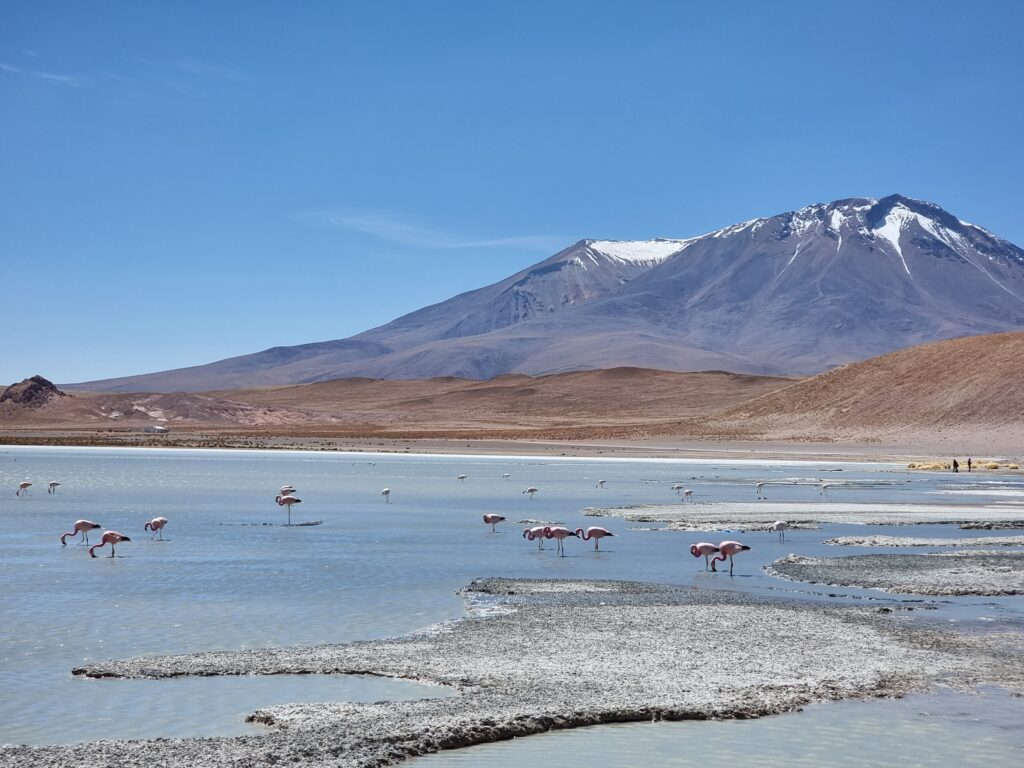
All in all, I couldn’t say which of the two days was the better. Both were probably about equally spectacular. In any case, it wasn’t like the second day was filler so you could justify a three-day tour. For this reason, I can only strongly recommend to refrain from a 1-day tour and to book the 3-day tour. Otherwise you will miss one of the most beautiful regions this world has to offer.
The second night, however, is quite tough. As I said, you spend the night at 4,400 meters above sea level. At night it has 0°C in the room, while it’s -10°C outside. So better prepare for a damn uncomfortable night. Fortunately, you can rent sleeping bags for 50 Bolivianos, but it remains a freezing night. The multi-day Salar de Uyuni tour is certainly a challenging one. As is so often the case with spectacular places in the world, you really have to earn the things you see.
The last day was then a pretty short one for me. We left the accommodation at 7:30 and then drove to the border between Bolivia and Chile. On the way we visited two more lagoons, the laguna verde as well as the laguna blanca. After that the sightseeing and my time in Bolivia was over and I entered my 140th country Chile.
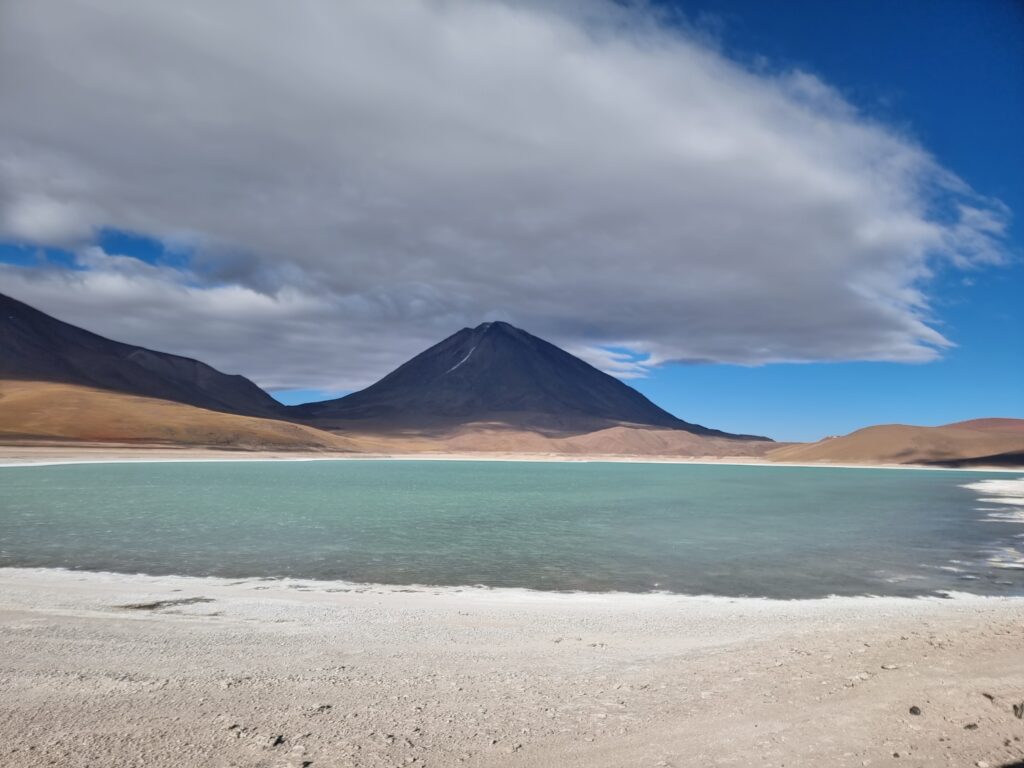
Is Bolivia worth a trip?
Bolivia was my eighth country in South America. When I set my itinerary for the country, I did a bit of cherry-picking. In total, I spent a week in the country, but focused on only two places. La Paz and the Salar de Uyuni. The reason for this was not that it is not worthwhile to travel longer in Bolivia. Rather, I decided against places that were similar to what I had already seen in other countries.
For example, I didn’t feel the need to visit the Amazon in Bolivia because I had already been there in Brazil. Also Sucre, undoubtedly a beautiful city, didn’t appeal to me as much. I’ve already seen so many pretty colonial cities and this would just have been another one. By the way, Lake Titicaca did not interest me when I was in Peru and this did not change in Bolivia. However, for those who have never or not often been to South America, Bolivia thus offers enough for a two or three week trip.
What the country does not offer are beaches or the sea. Bolivia is one of two landlocked countries in South America (the other is Paraguay). Bolivia had a coastline about 150 years ago, before it was annexed by Chile in a war. For this reason, if you want to have a bit of an ocean feeling in Bolivia, you’ll have to visit Lake Titicaca.
What is my conclusion about Bolivia? Basically quite positive. I have already admitted that La Paz was not really my favorite city. Nevertheless, I still had a good time there. Even the incident with the fake police doesn’t change that. After all, something like that could have happened in other Latin American countries as well.
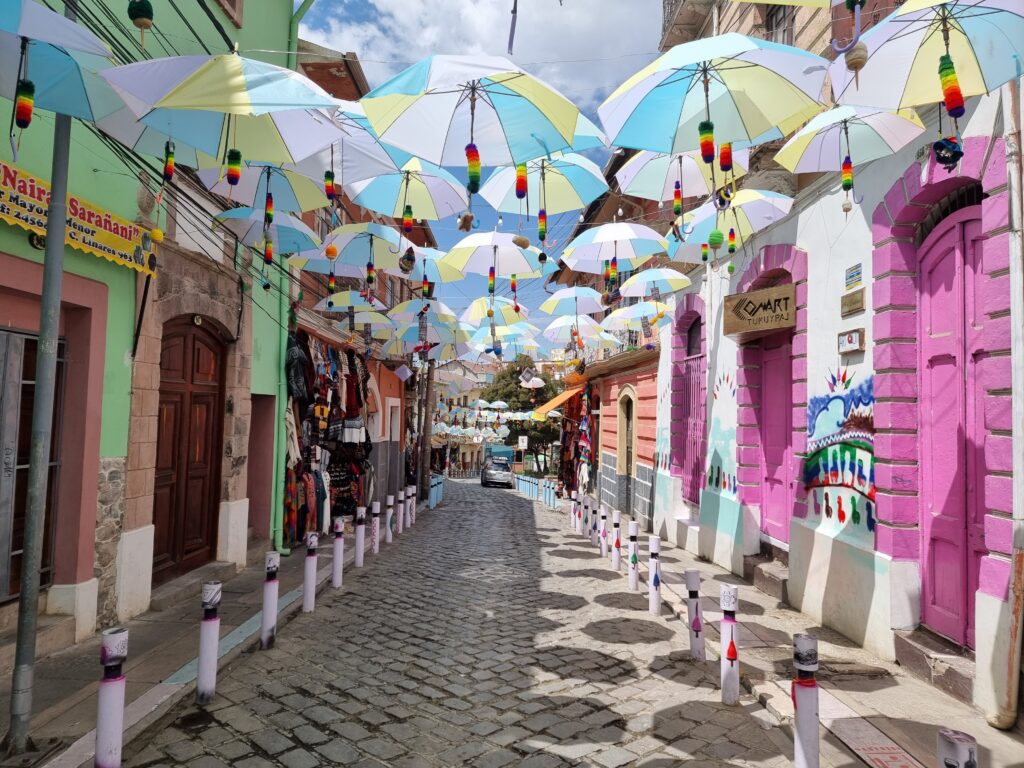
However, I was absolutely thrilled by the Salar de Uyuni. I would even go so far as to call this place one of the most spectacular I have ever seen. Without a doubt, this three-day tour will find itself in my top experiences worldwide. For me, in any case, the Salar de Uyuni is a place that every traveler should have seen at least once.
Besides the great things to see in Bolivia, the country is also one of the cheapest in South America. Backpackers will easily get away with $20 dollars a day here if they sleep in dorms and rely on street food. I paid the equivalent of about $30 per night for my hotel in the center of La Paz. In restaurants, I spent about $10-15 for food, a drink and a coffee. Cabs were also inexpensive. I usually spent around $3 for a ride within La Paz.
Bolivia can certainly be described as a rather easy travel destination on the whole. However, English is not widely spoken, so it is helpful if you know a little Spanish. In addition, there are still some odd things in Bolivia that make the country nevertheless not quite as easy as, for example, Peru. There are strikes every now and then, which can also affect travelers. Sometimes the strikers block off the roads leading into or out of a city. As a result, you may have to spend a few extra days in one place until they lift the blockade.
Compared to other countries in South America, Bolivia is somewhere in the midfield in my personal ranking. To be fair, that’s also because the competition here is pretty stiff. Anyway, I think Bolivia combined with Peru is one of the best trips you can make in the world. The number of jaw-dropping places you can see in these two countries is second to none (imagine to see Machu Picchu, Vinicunca (rainbow) mountain, Huacachina and the Salar de Uyuni in one trip!).
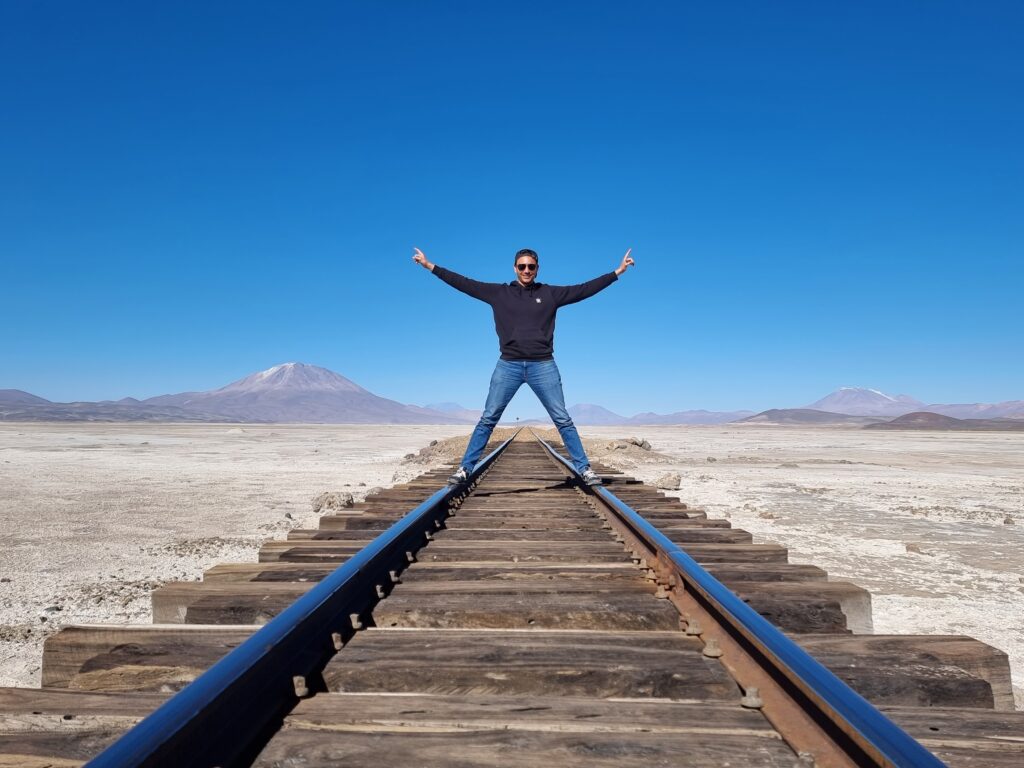
As mentioned before, Chile was then my next South American country. For those traveling overland from Bolivia to Chile, I have a few important tips. These will follow soon in my Chile trip report.
Click here to find the trip reports of the 180+ other countries I have visited so far!
